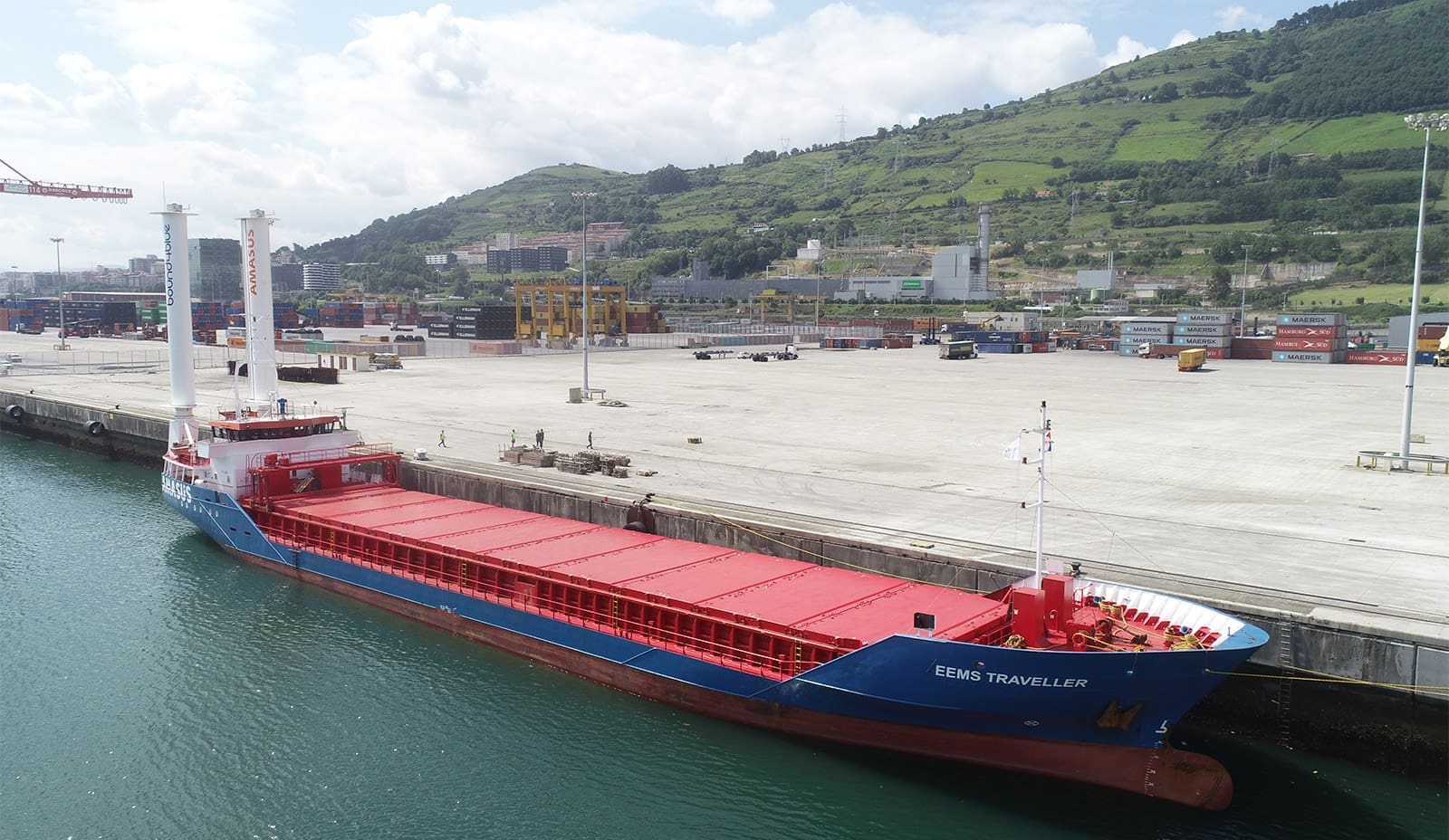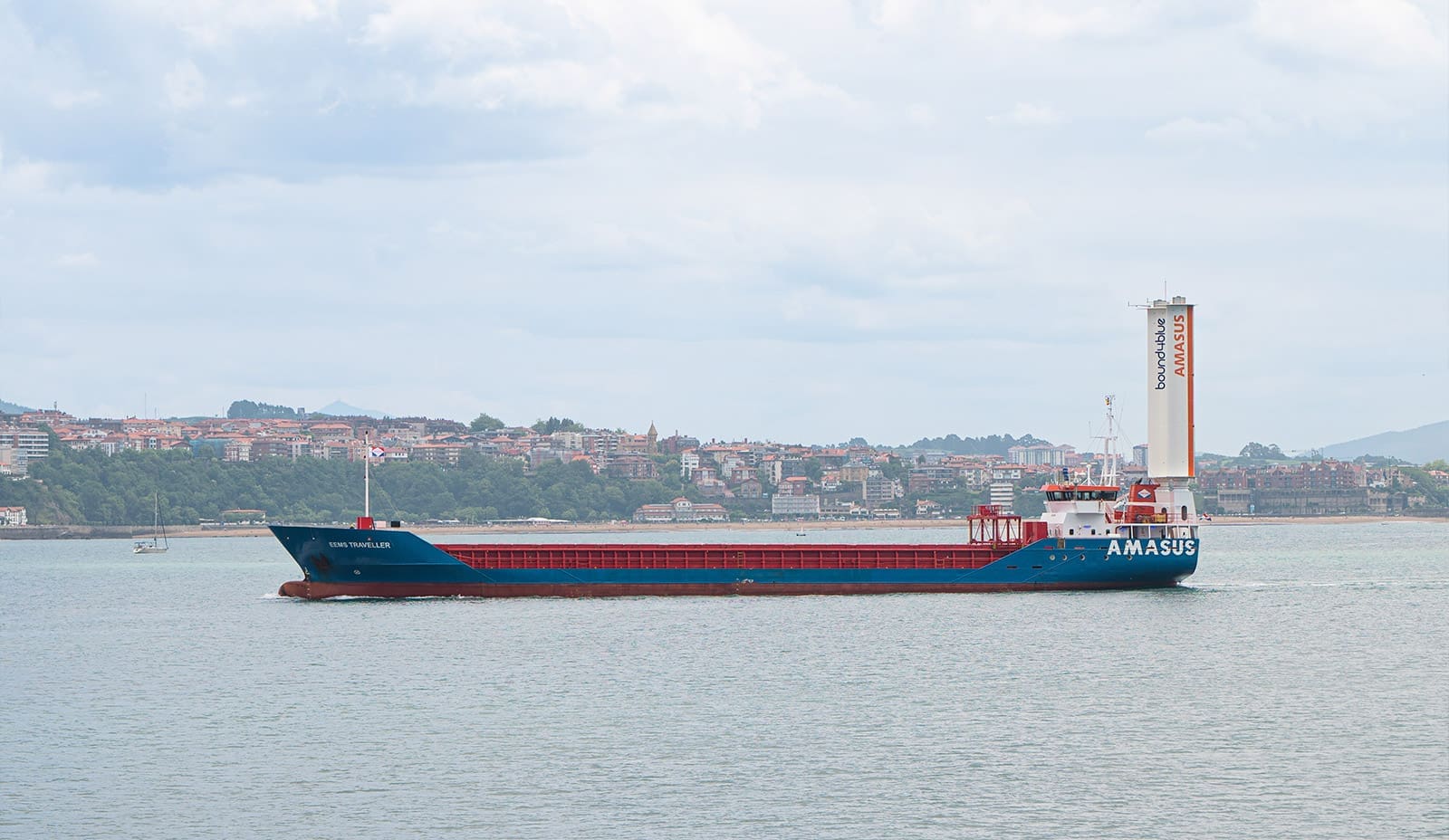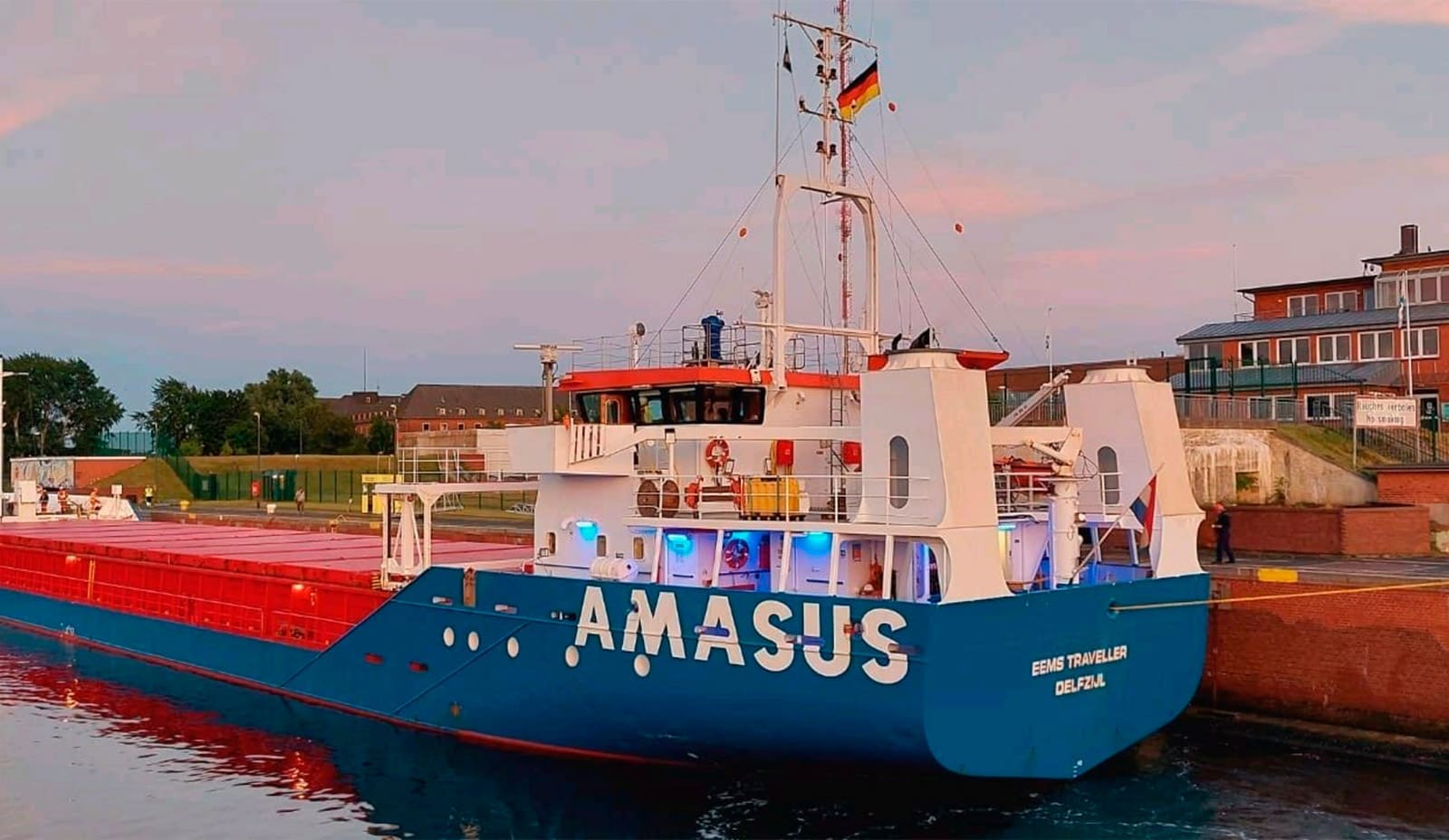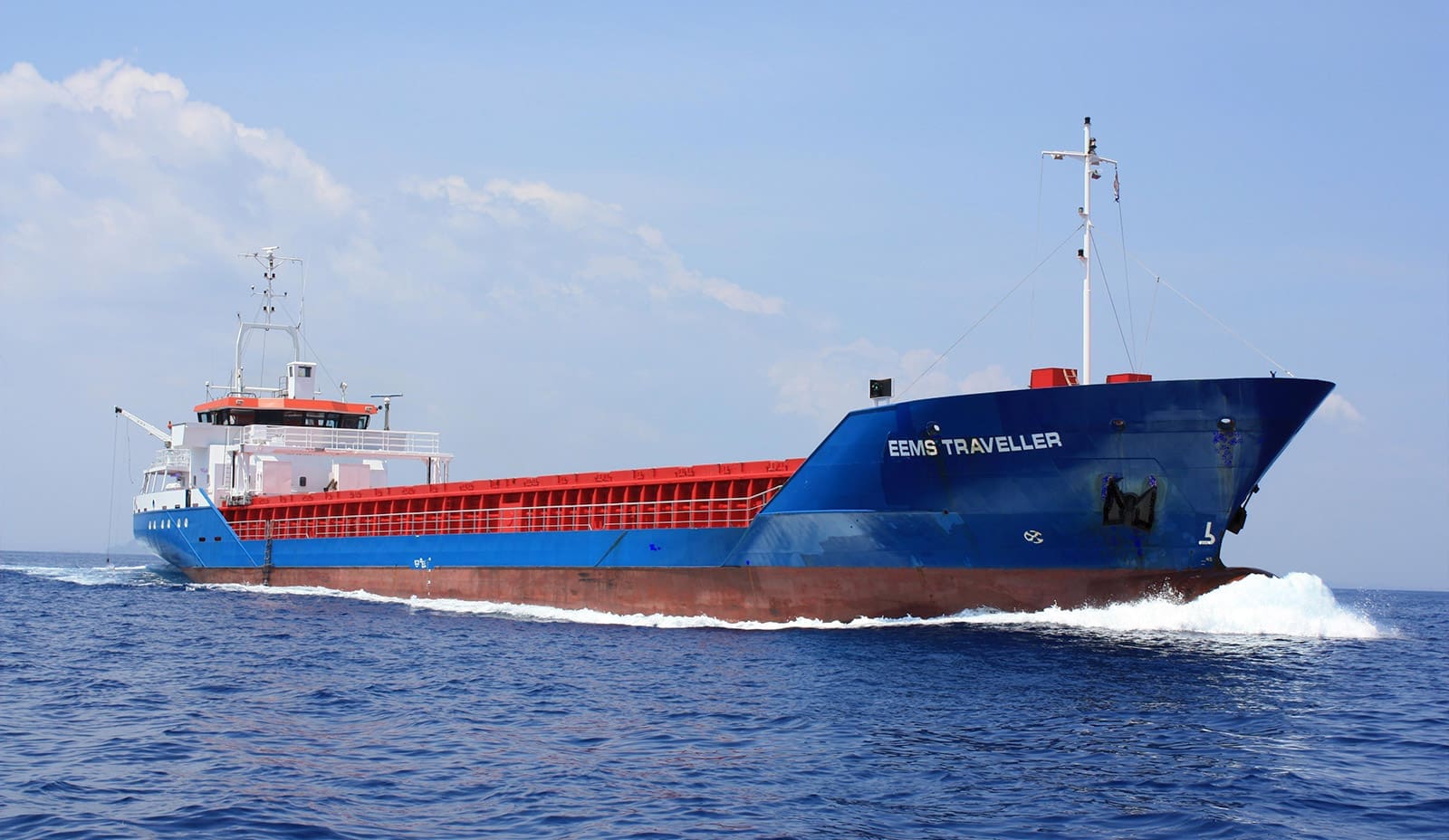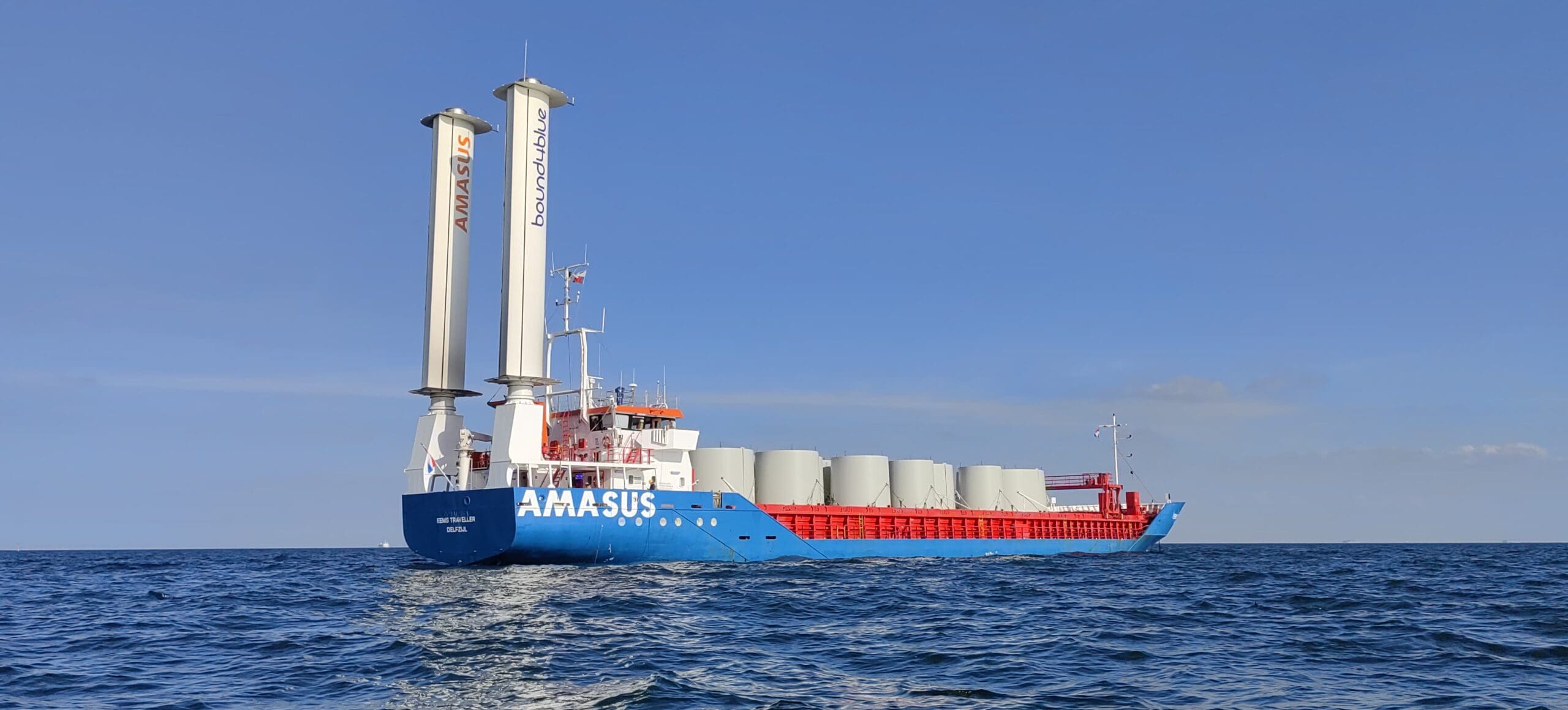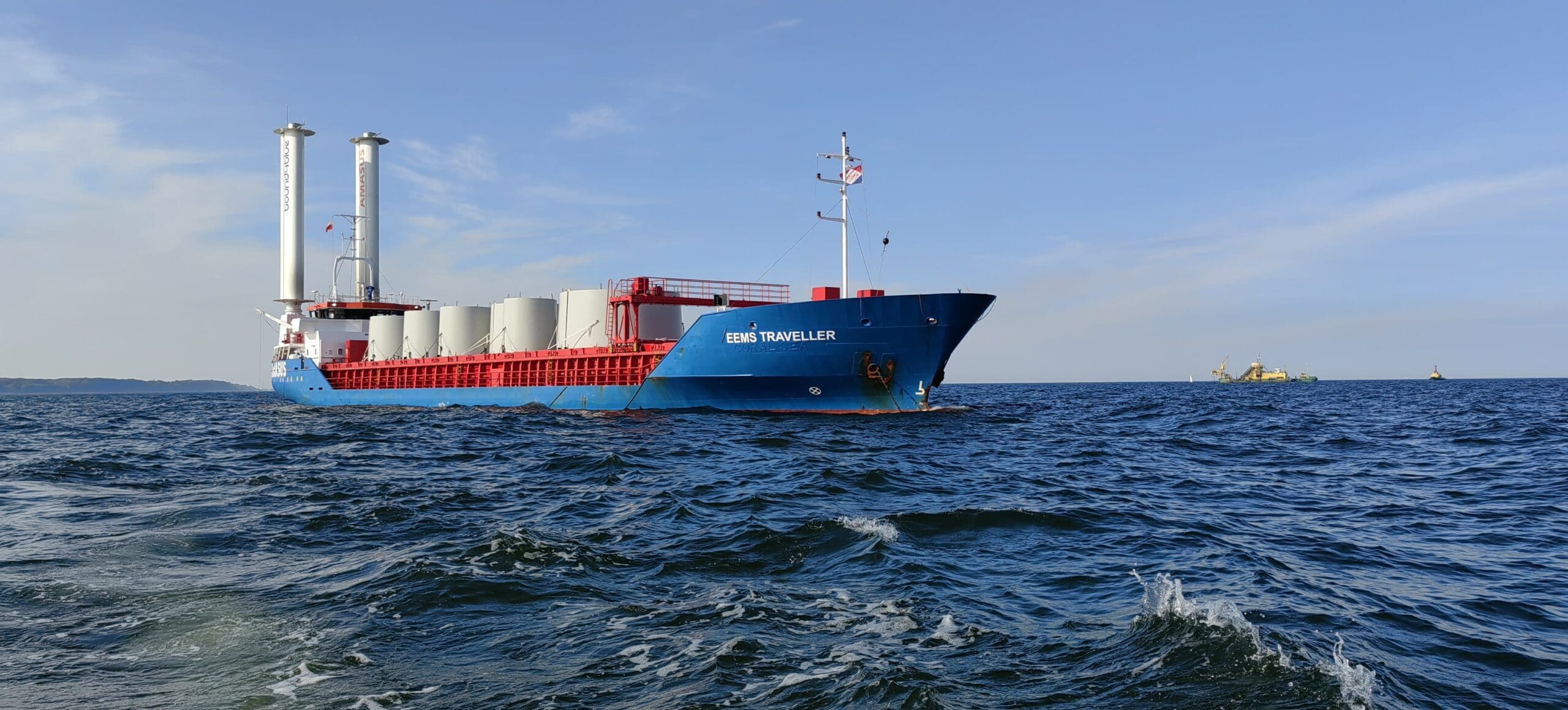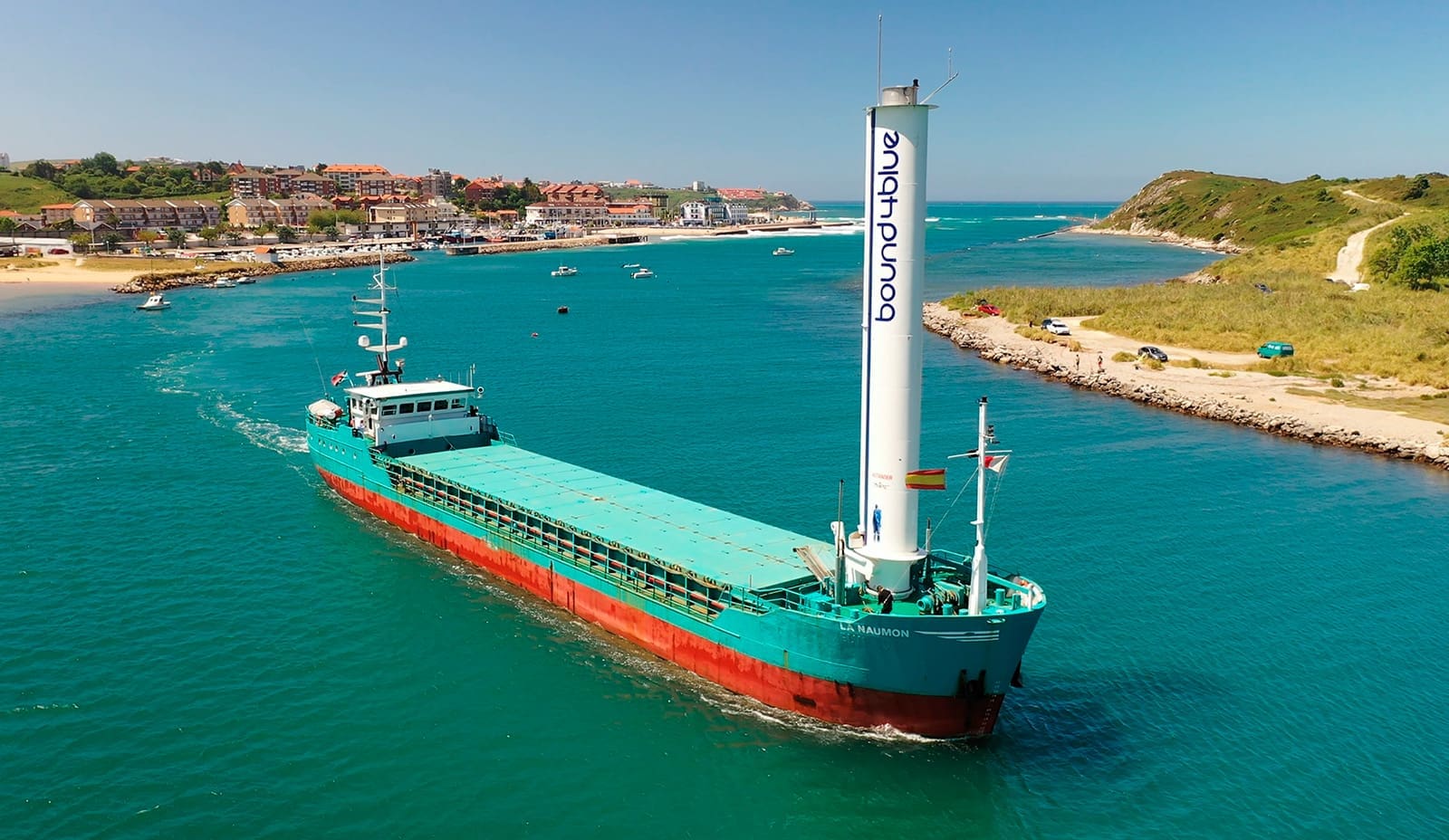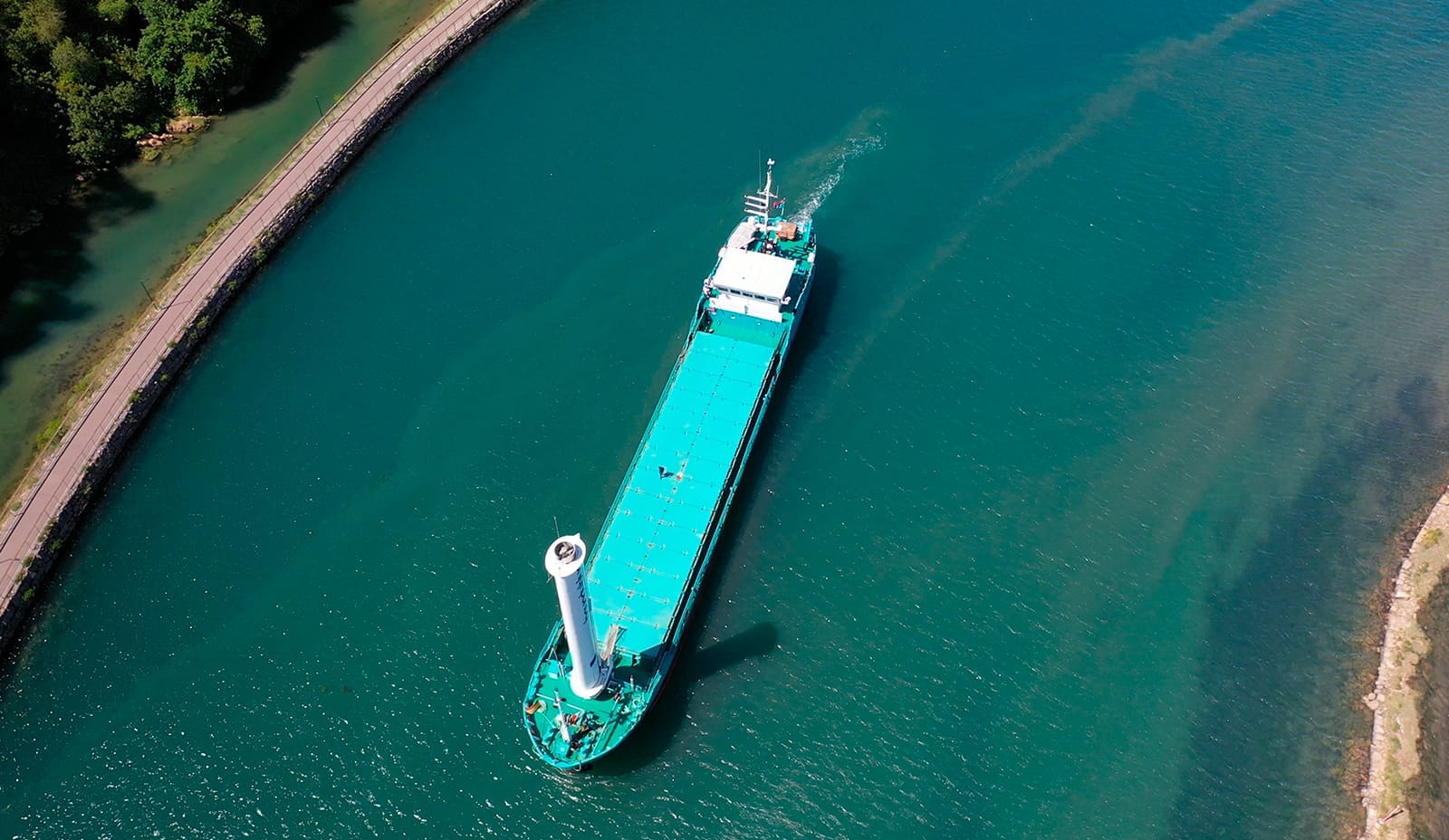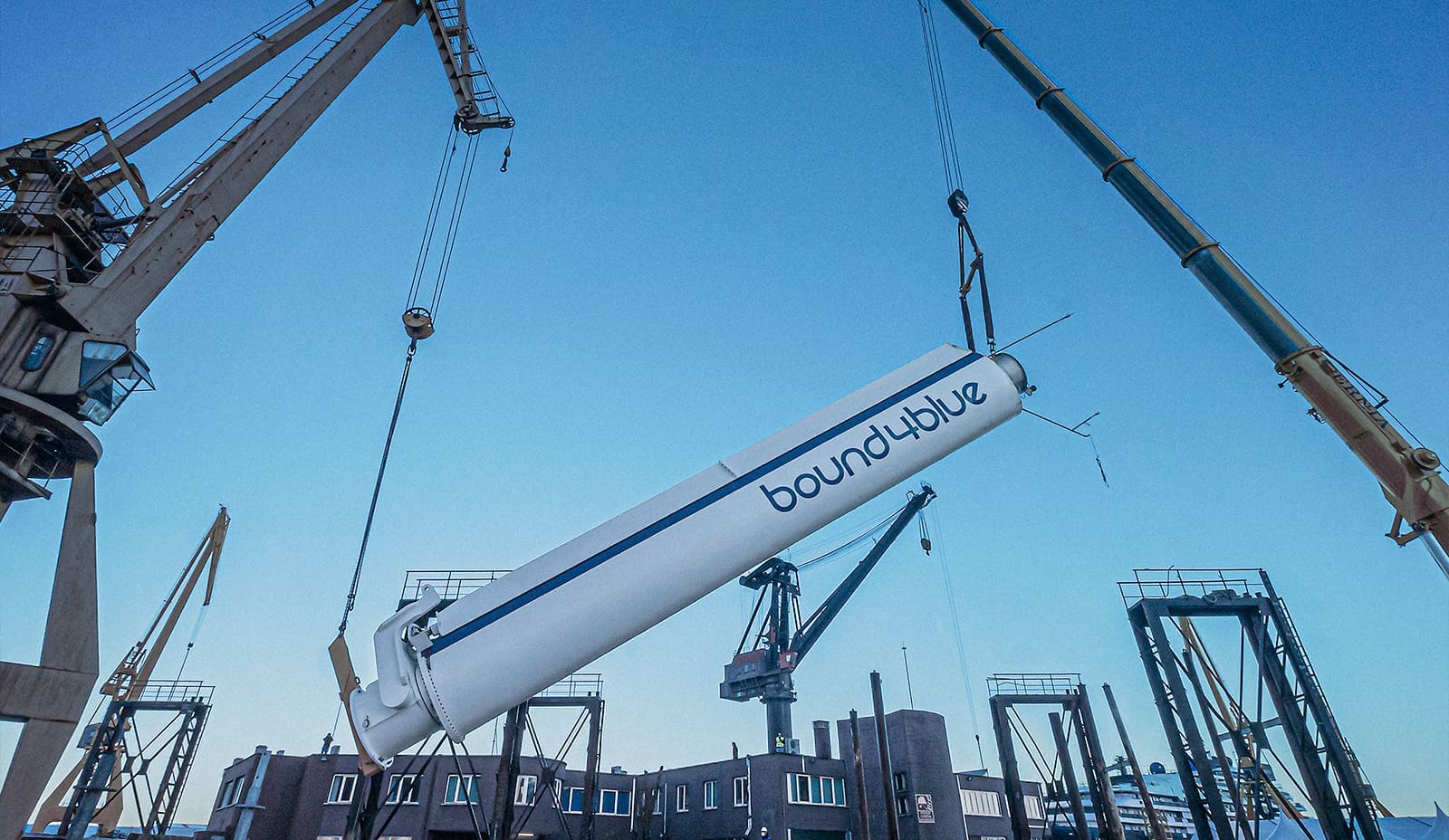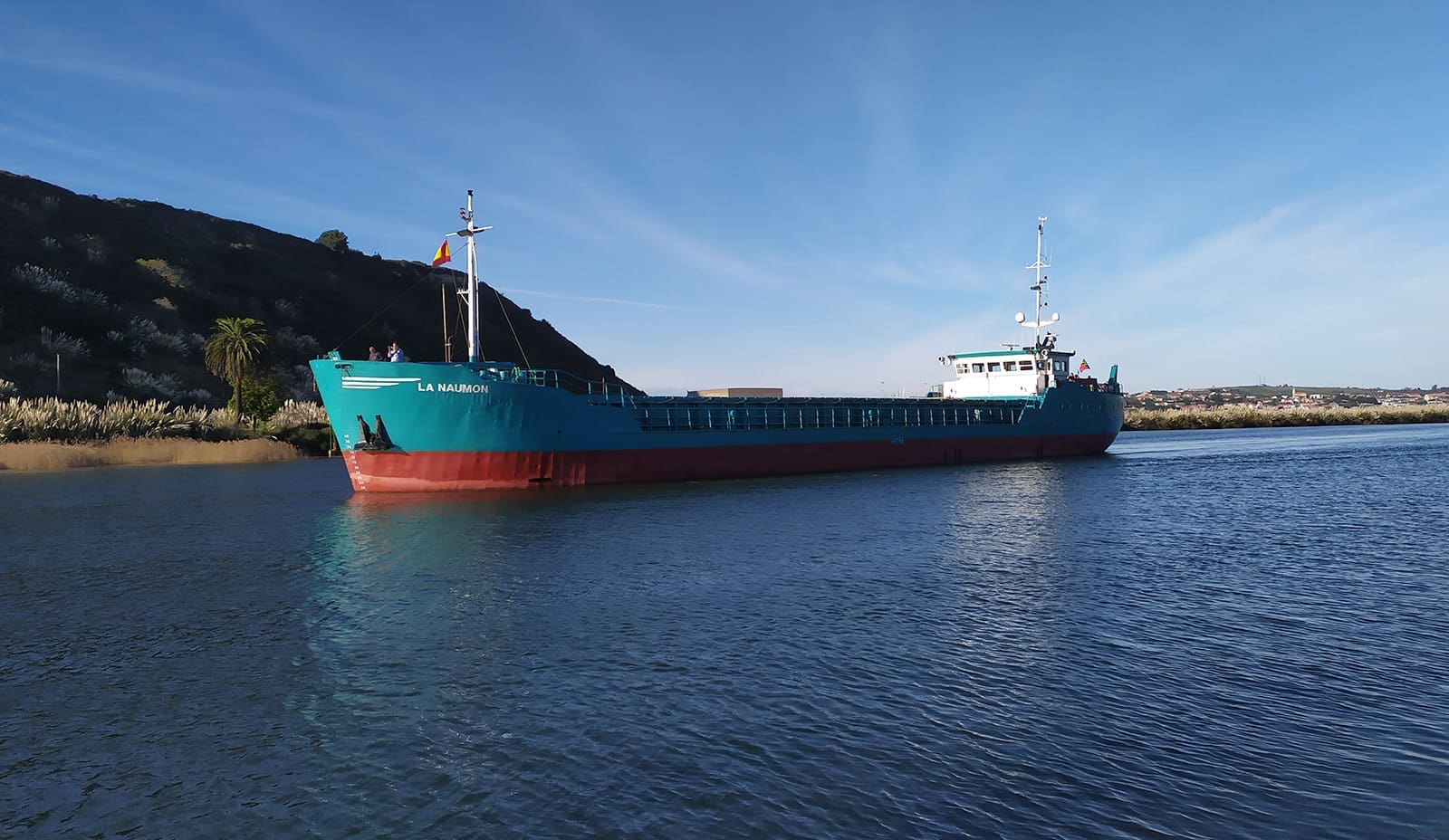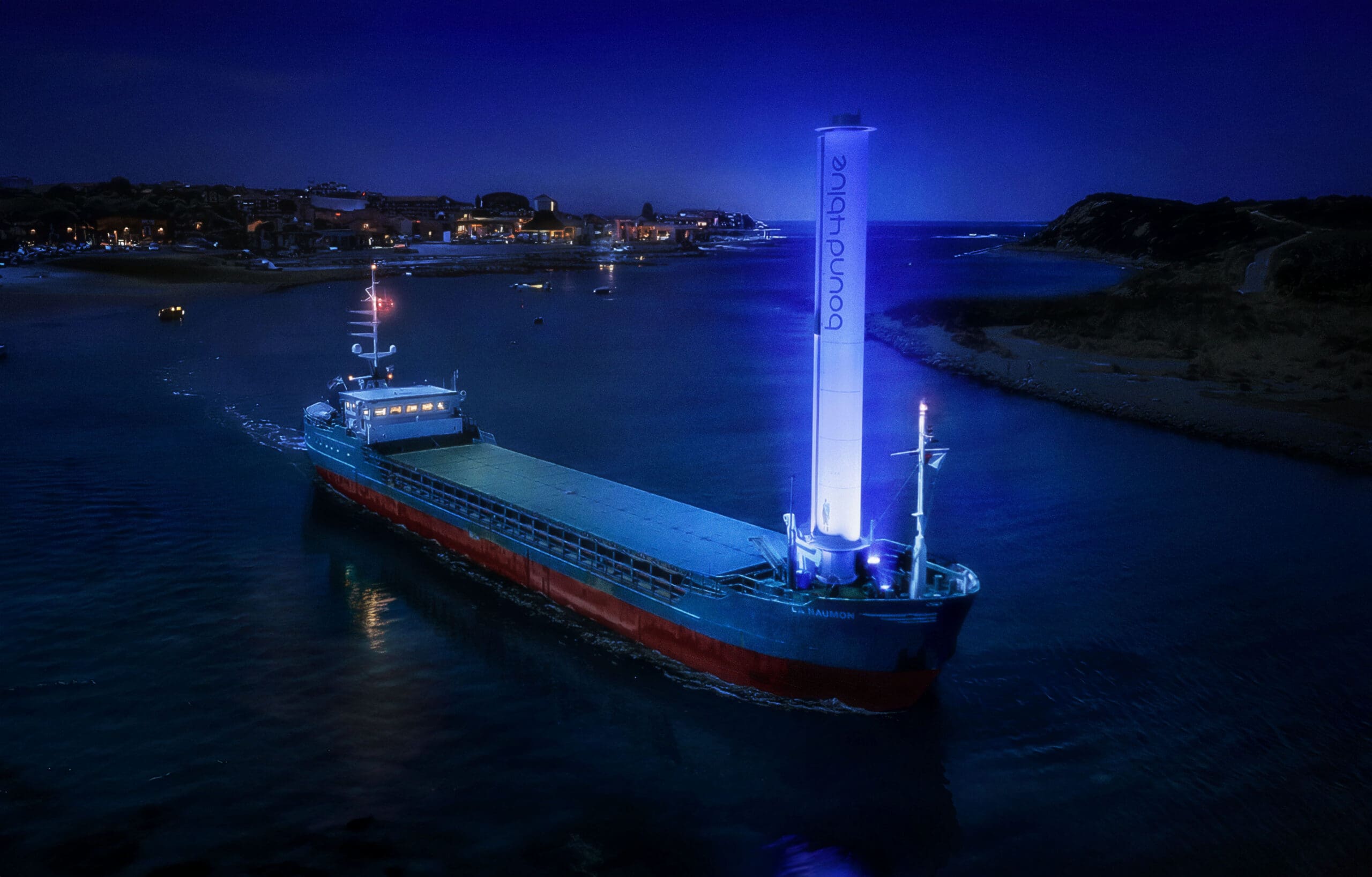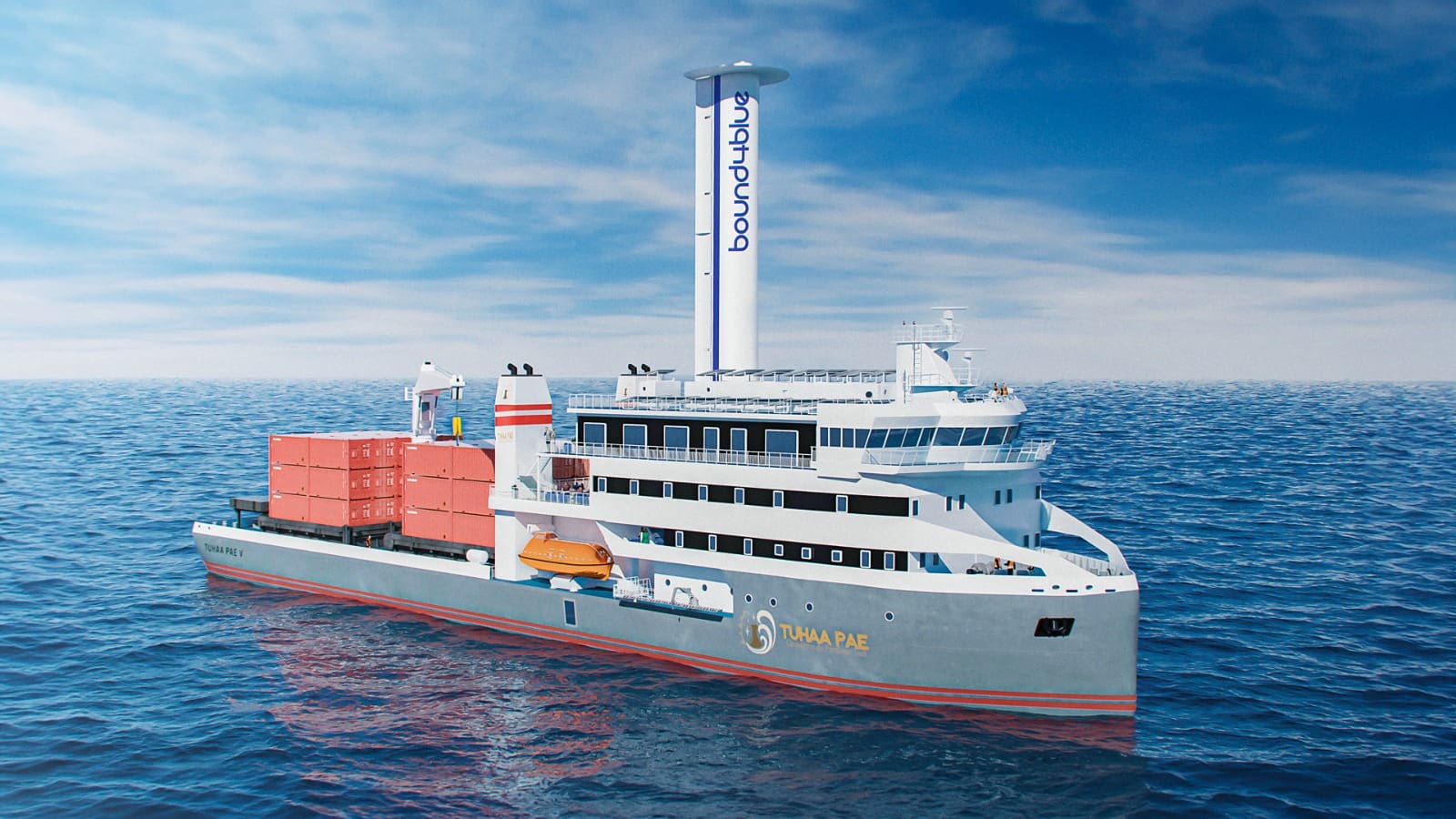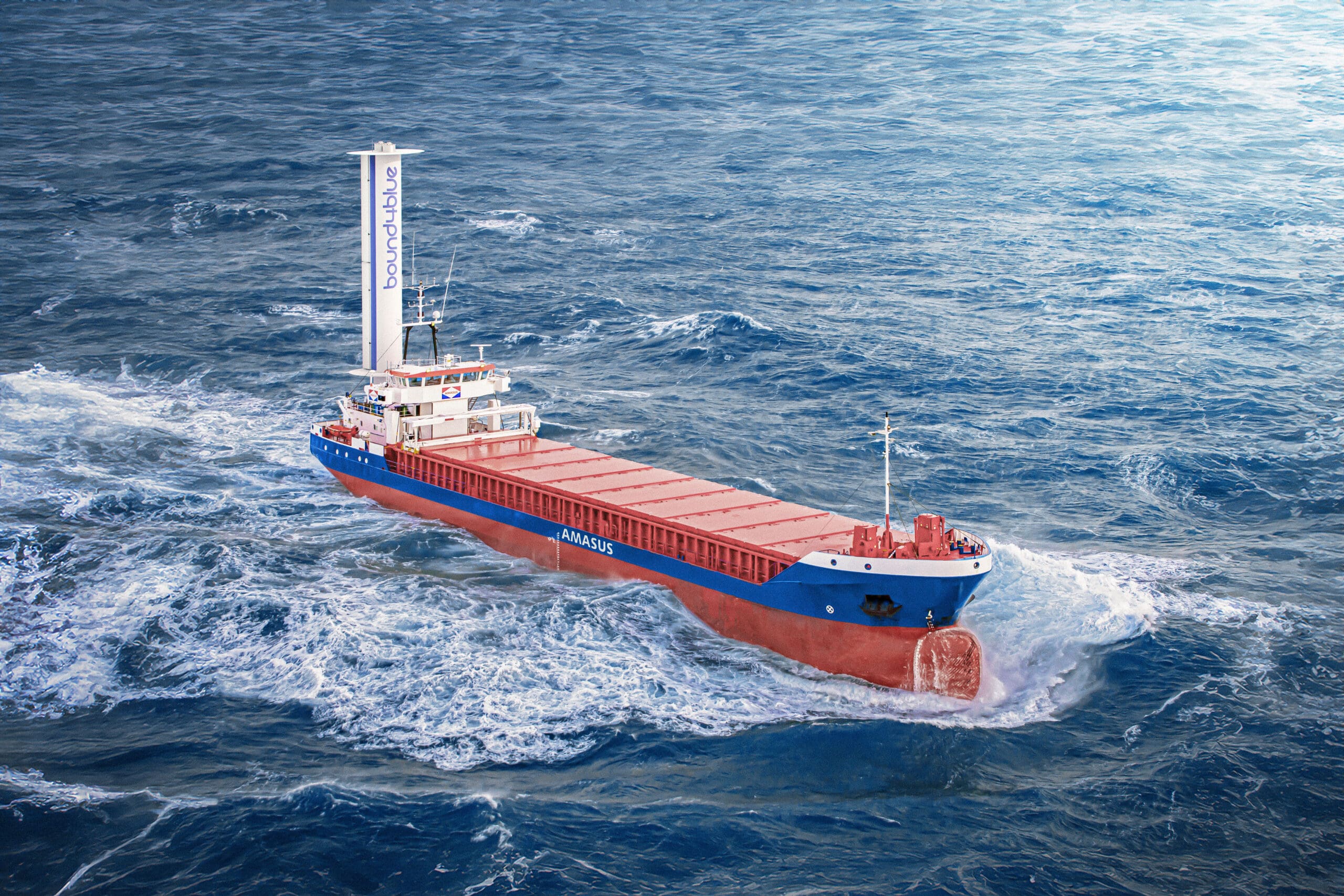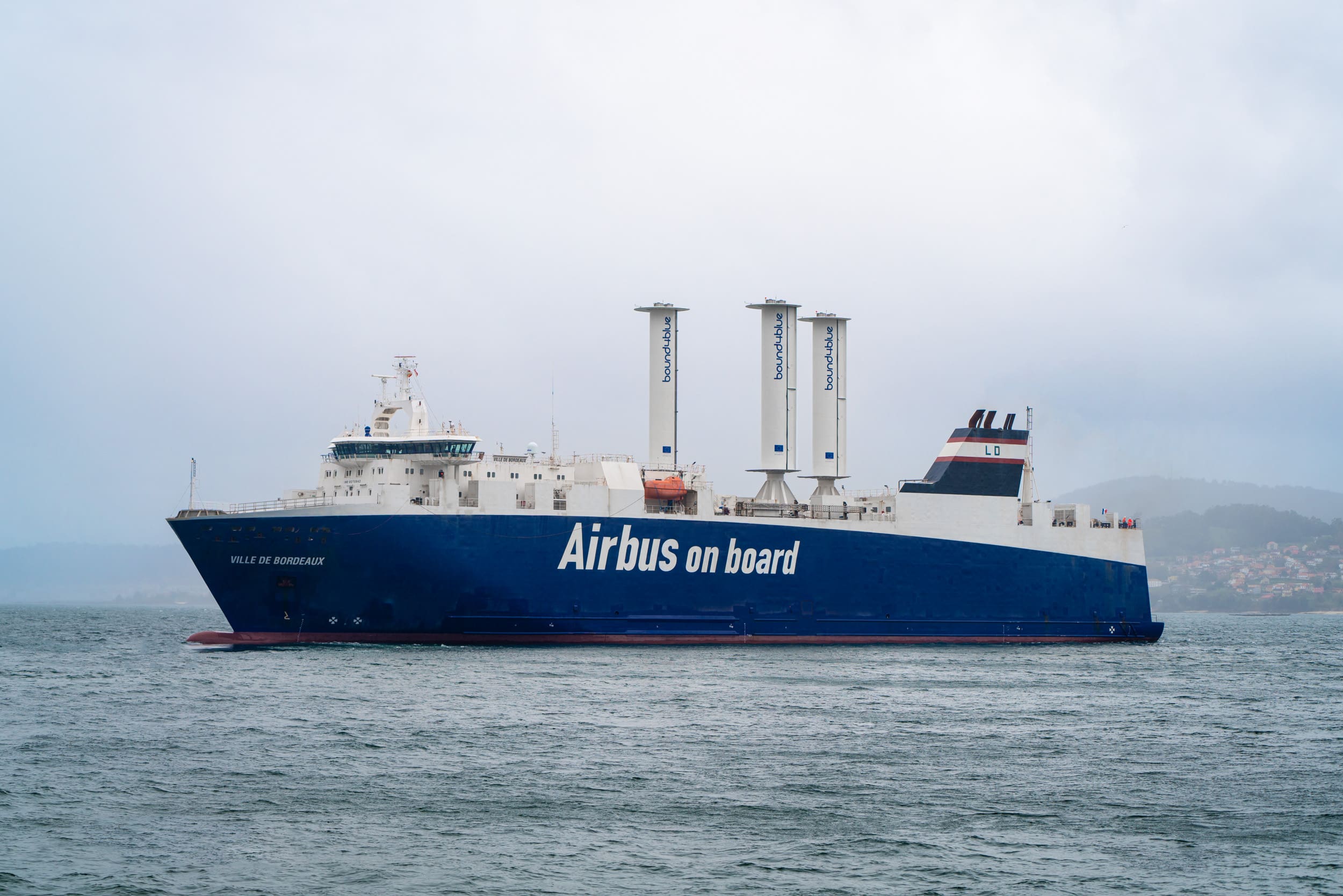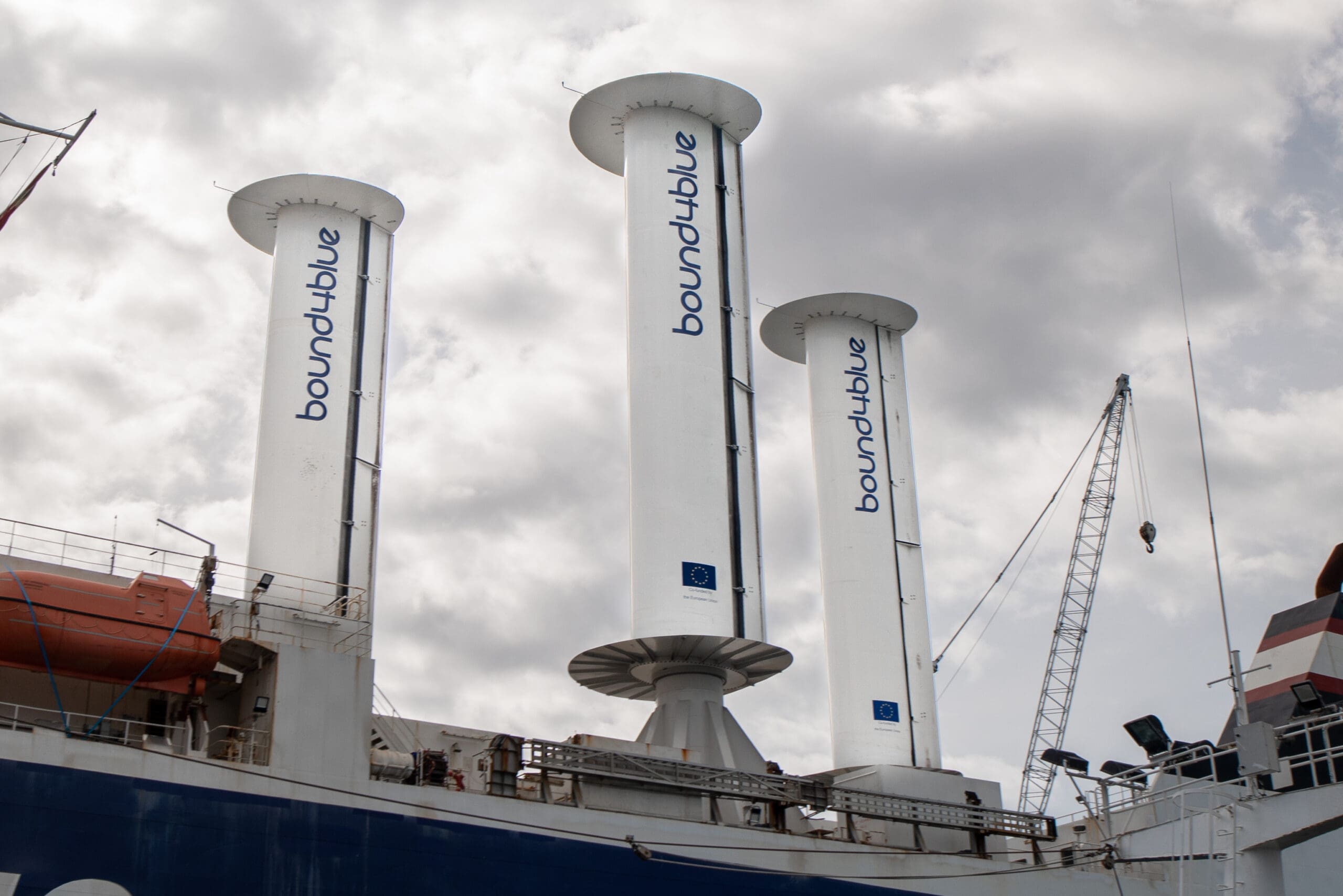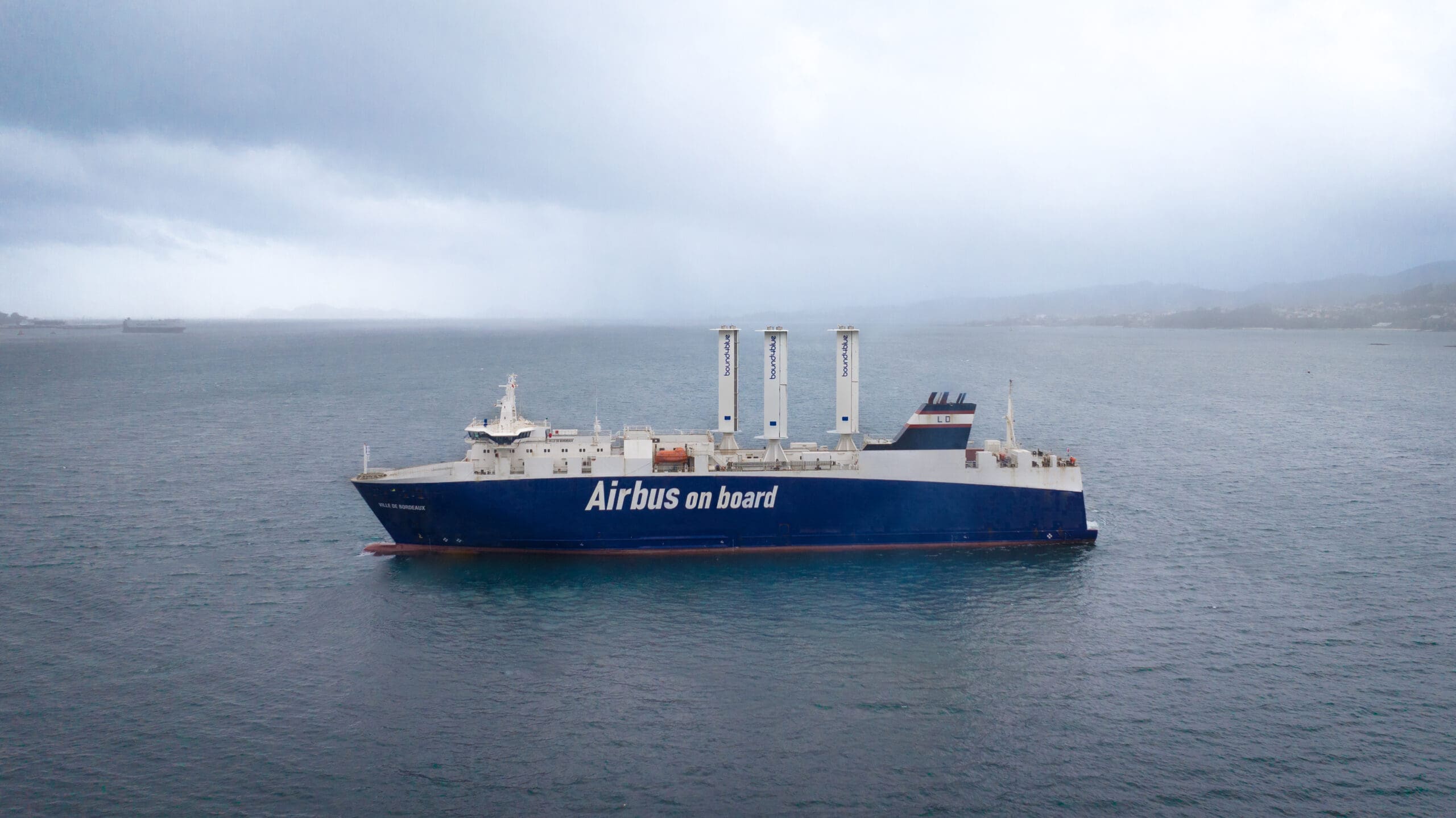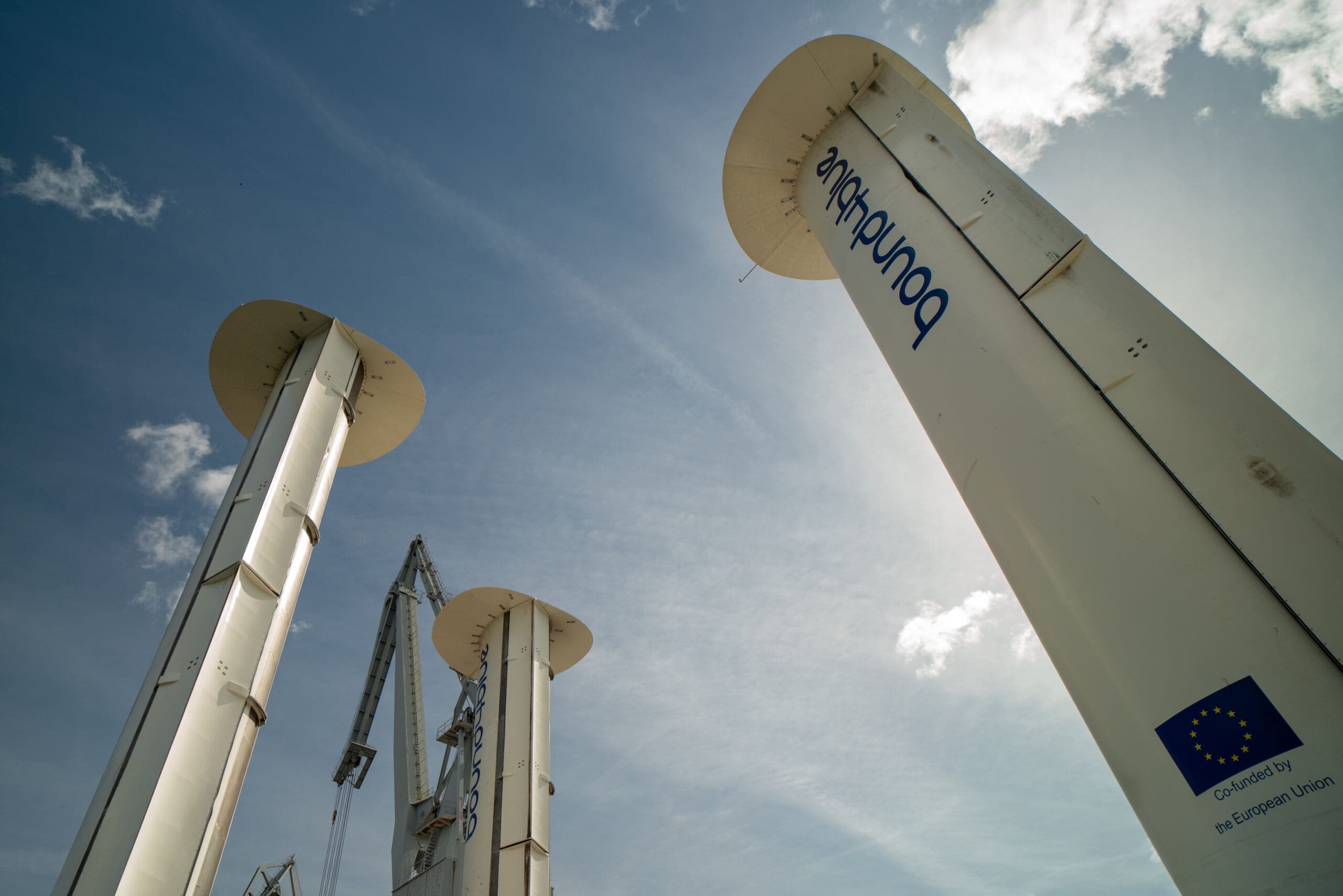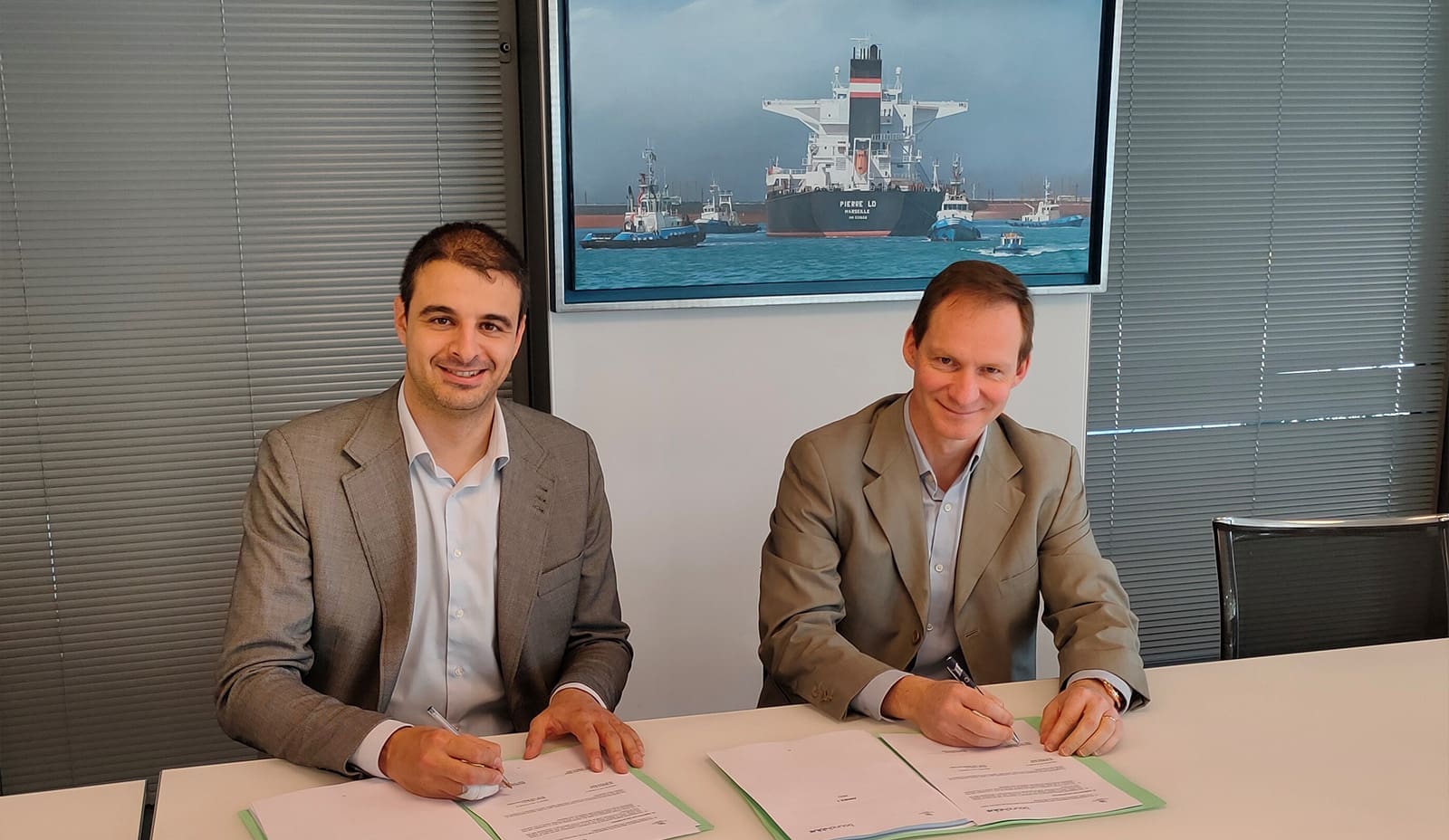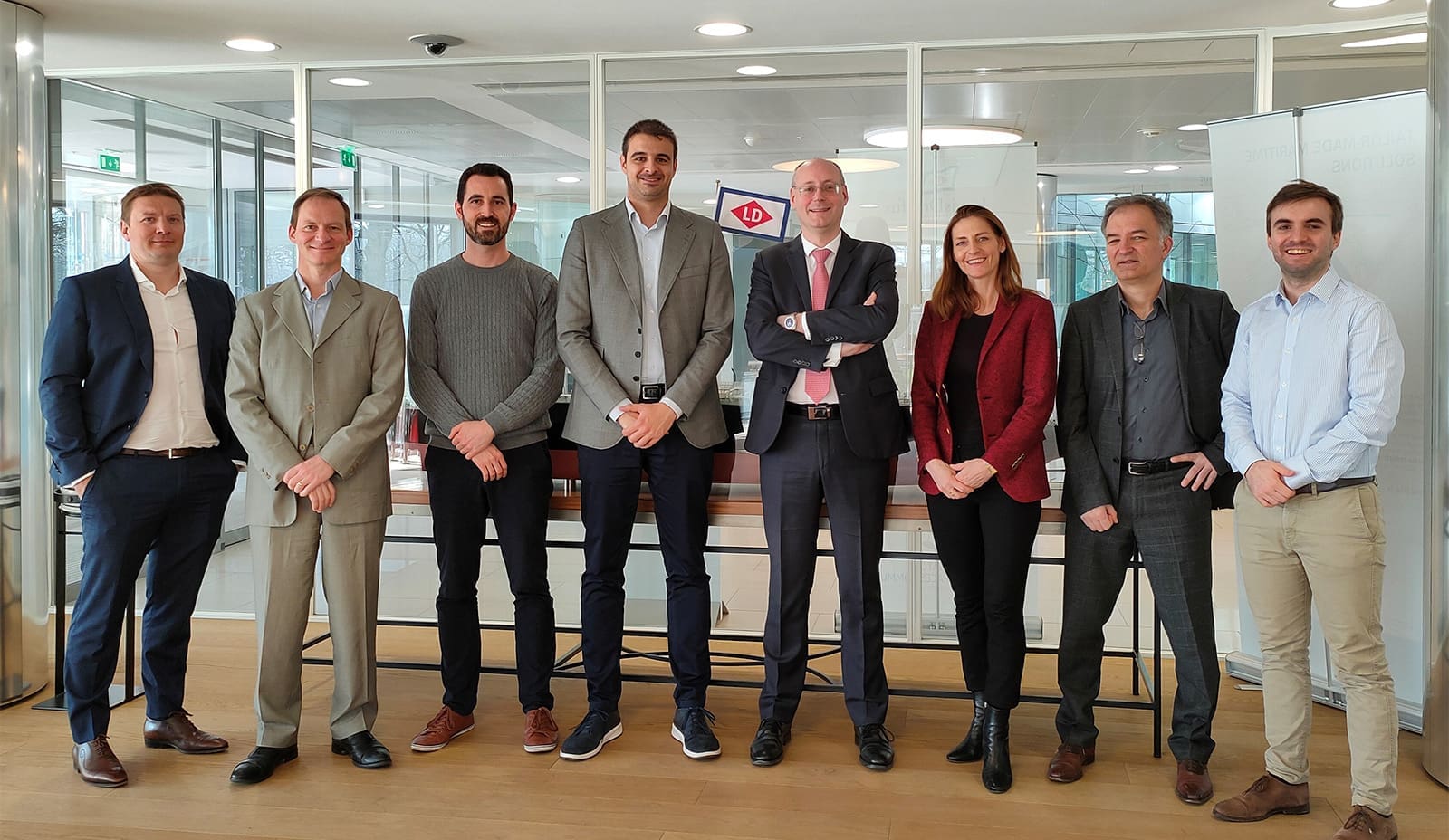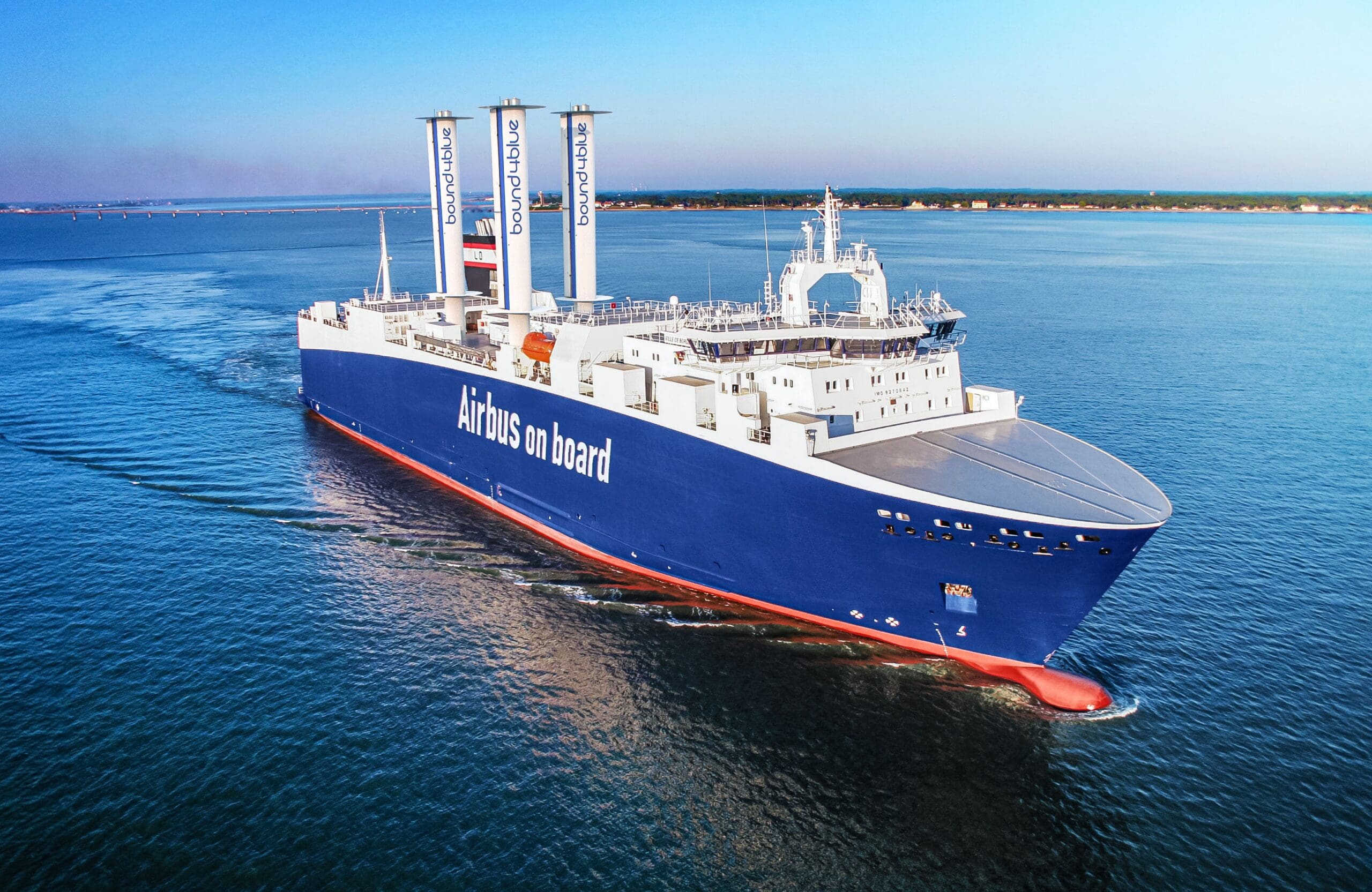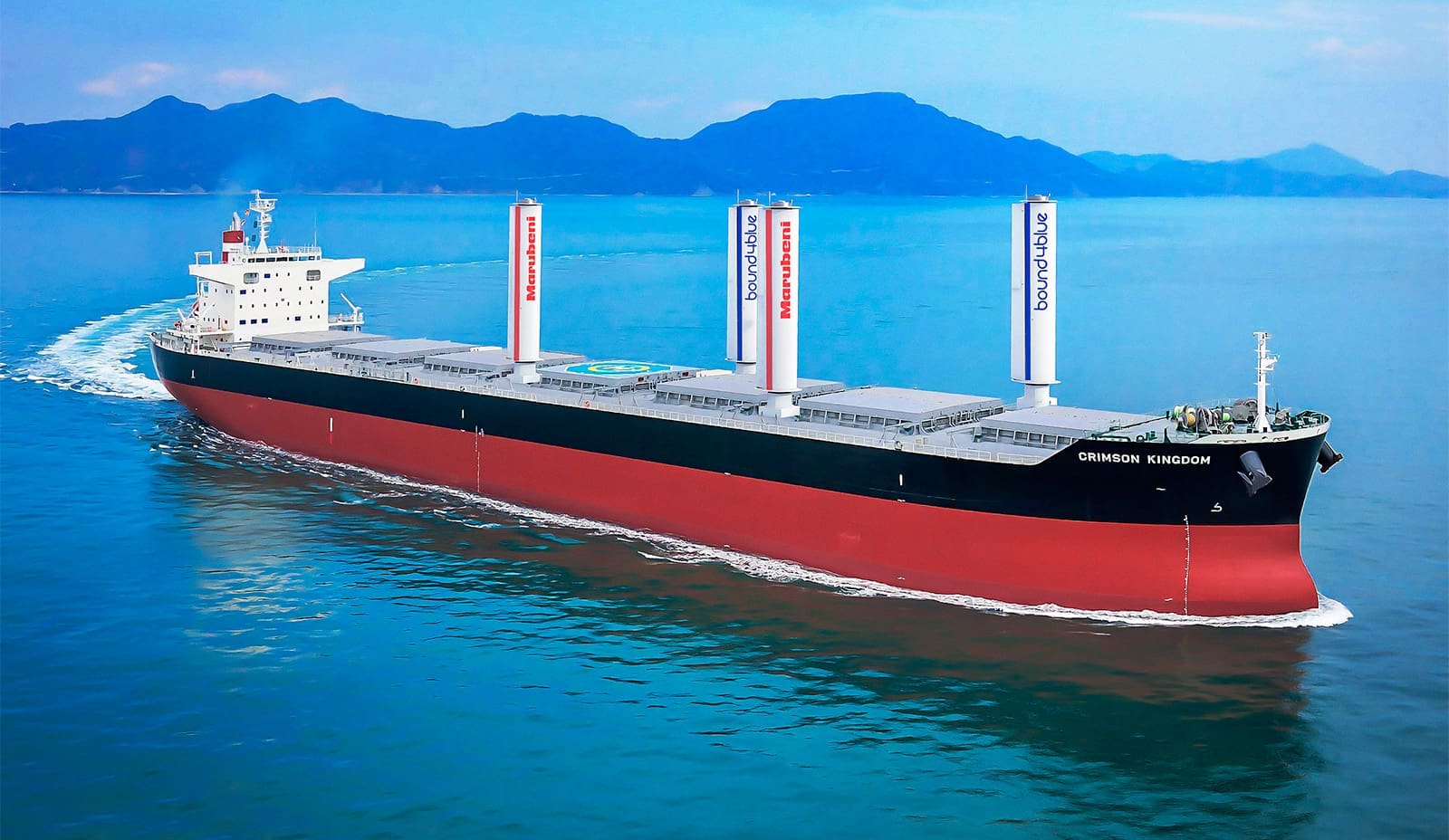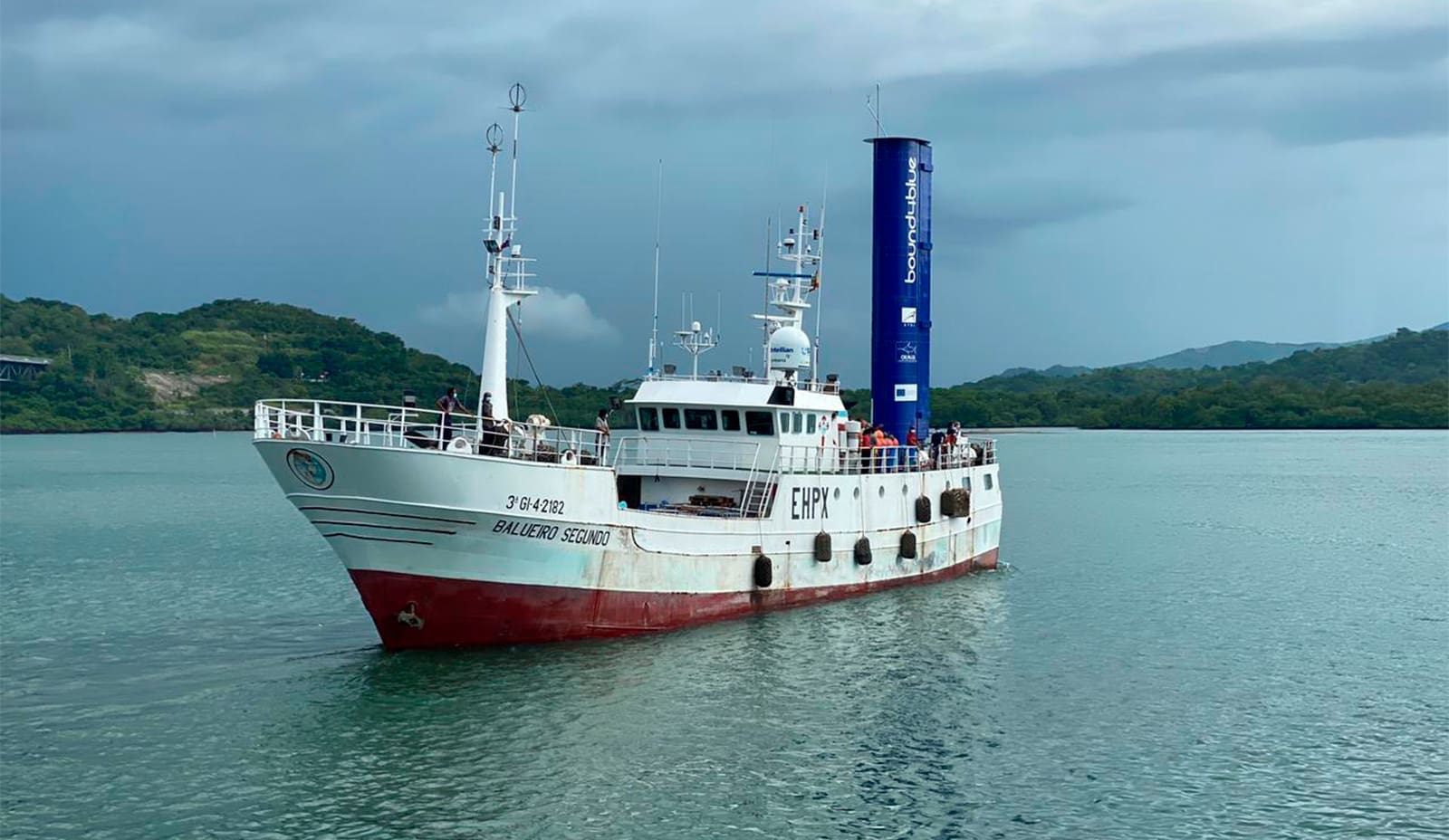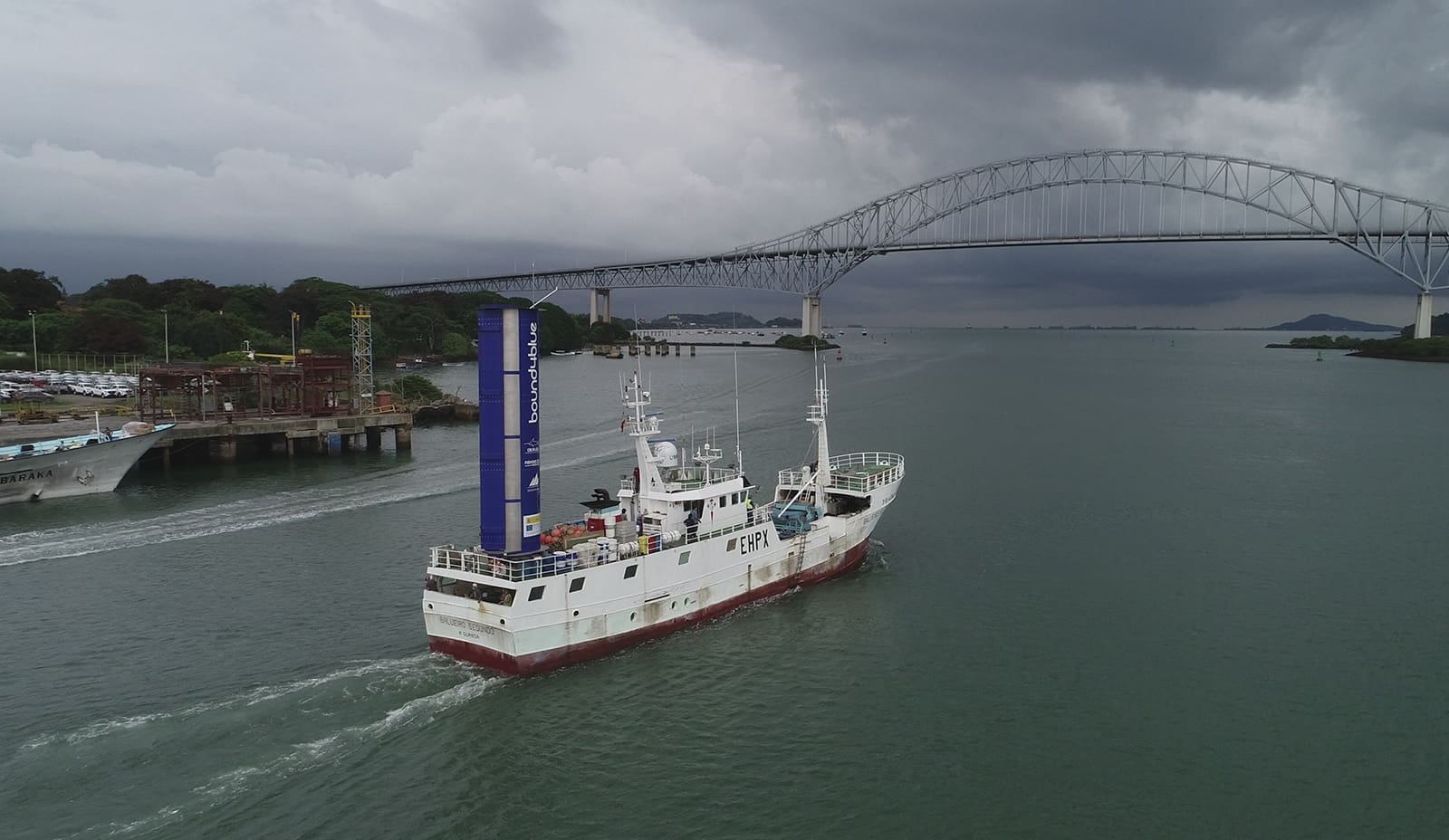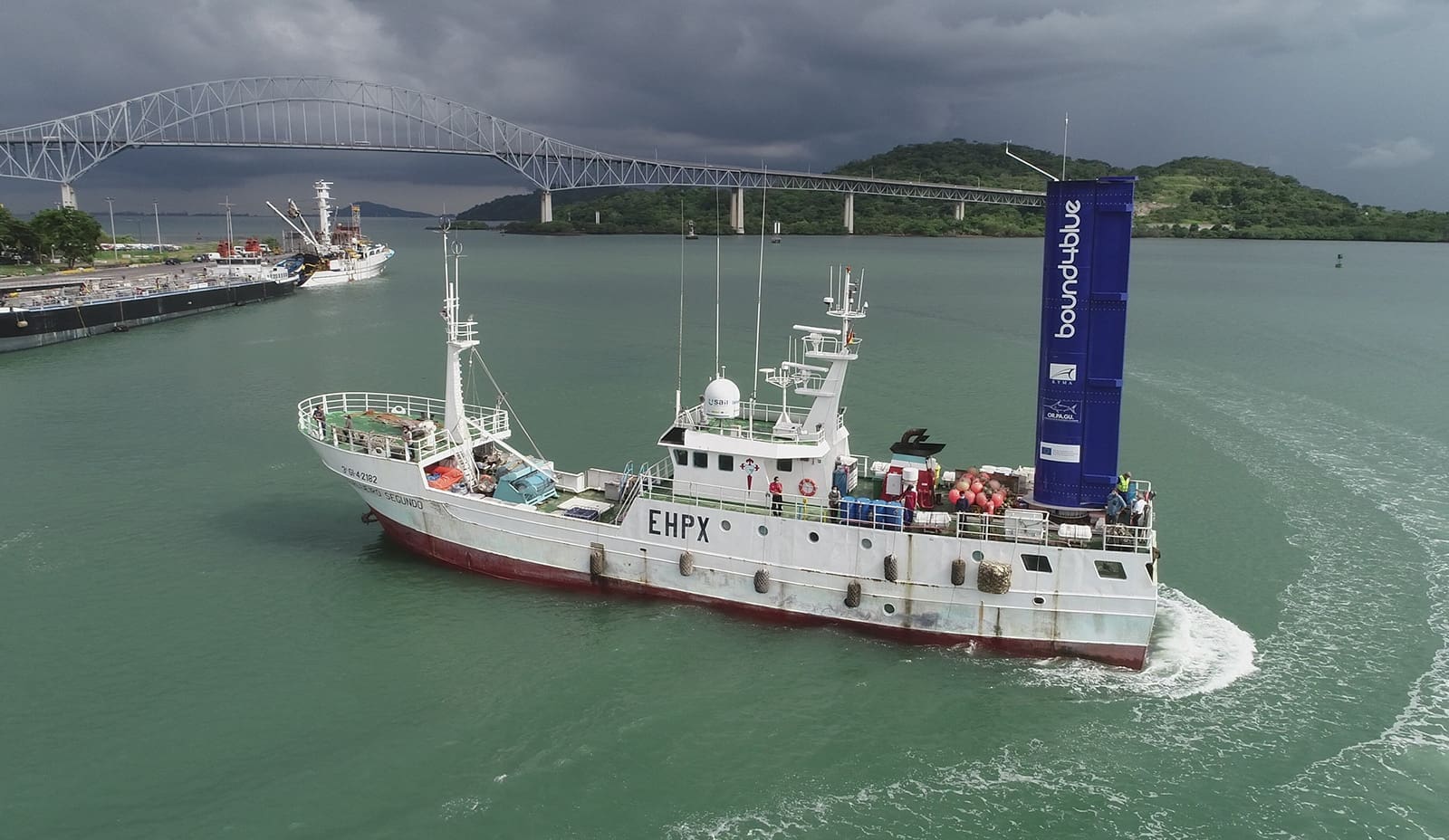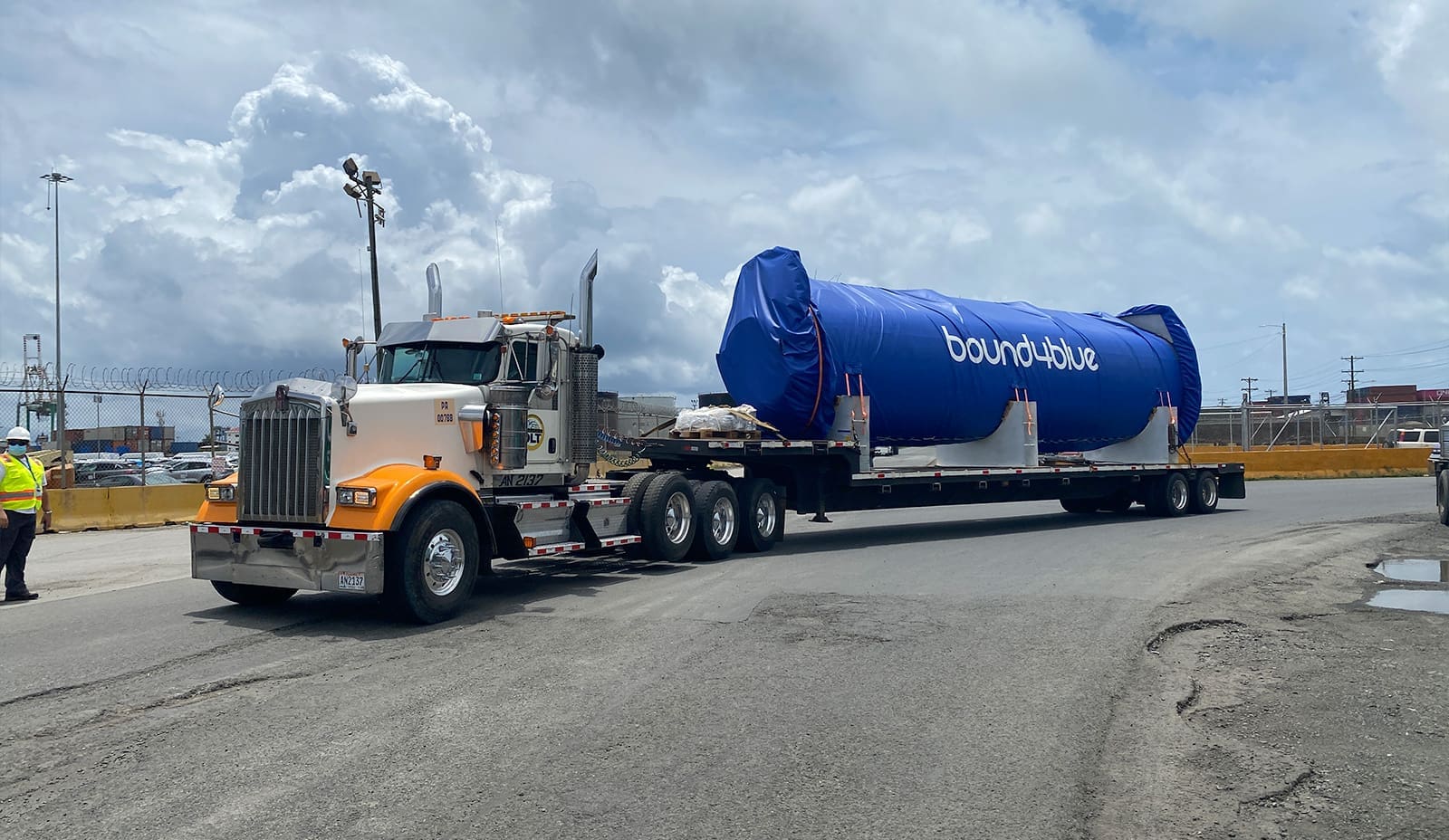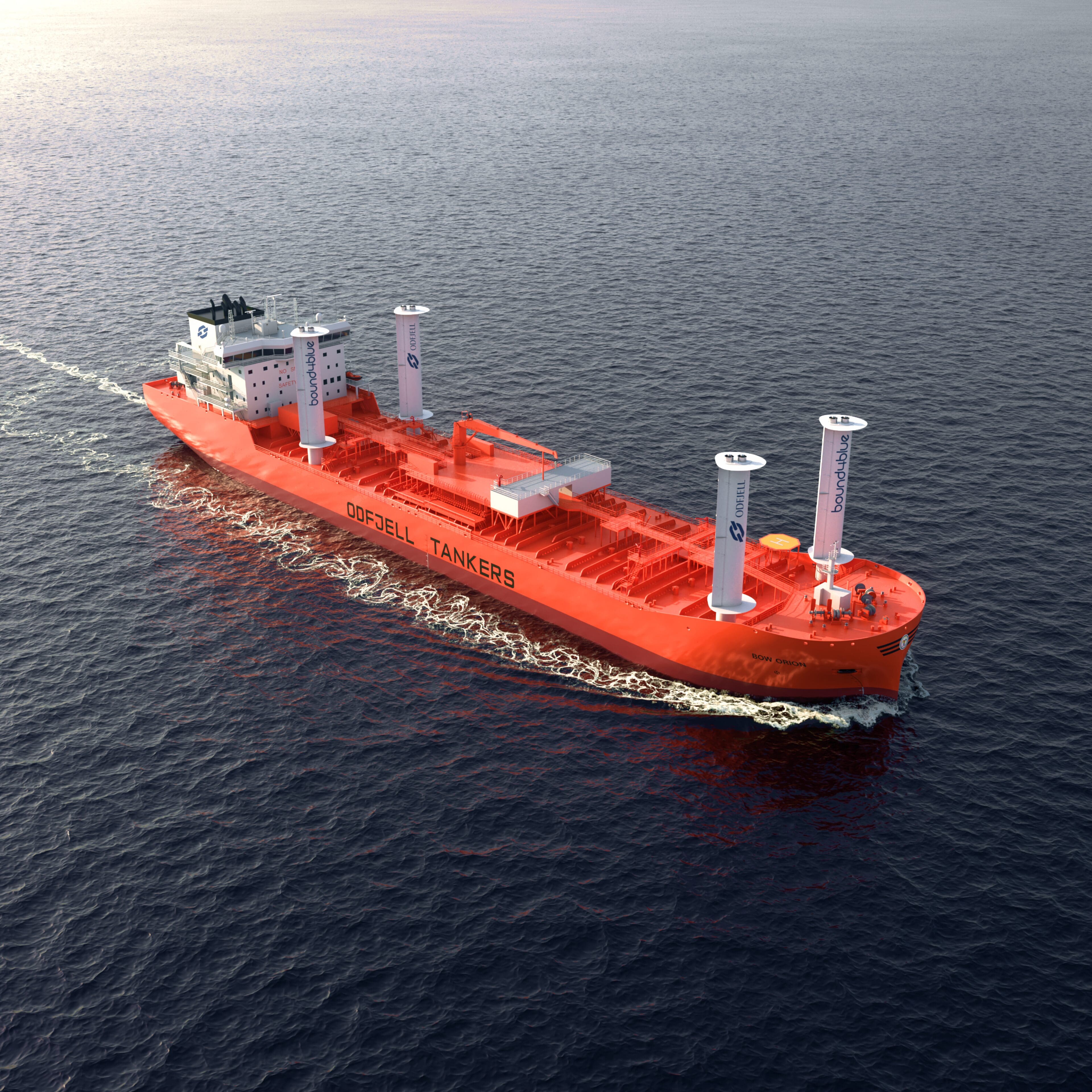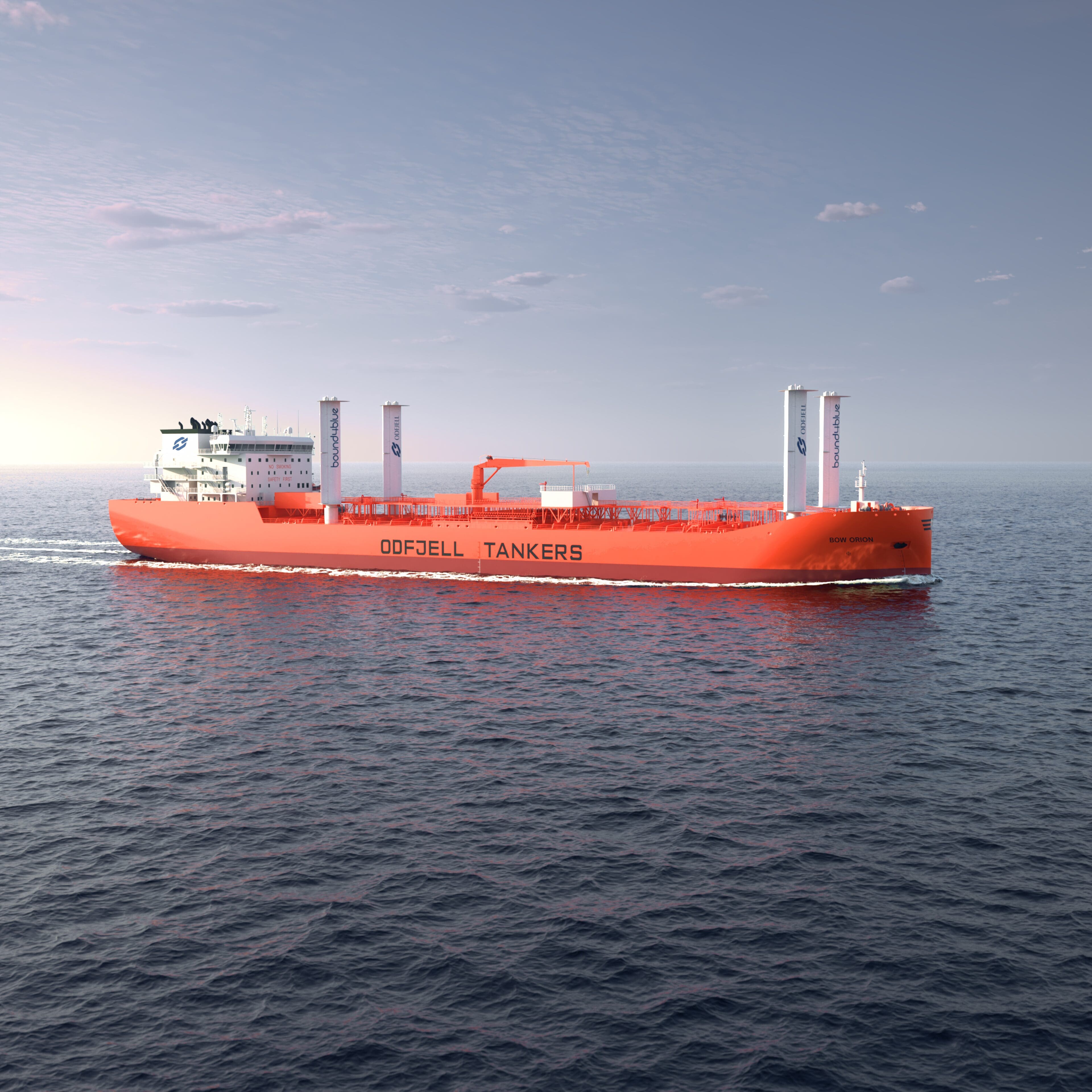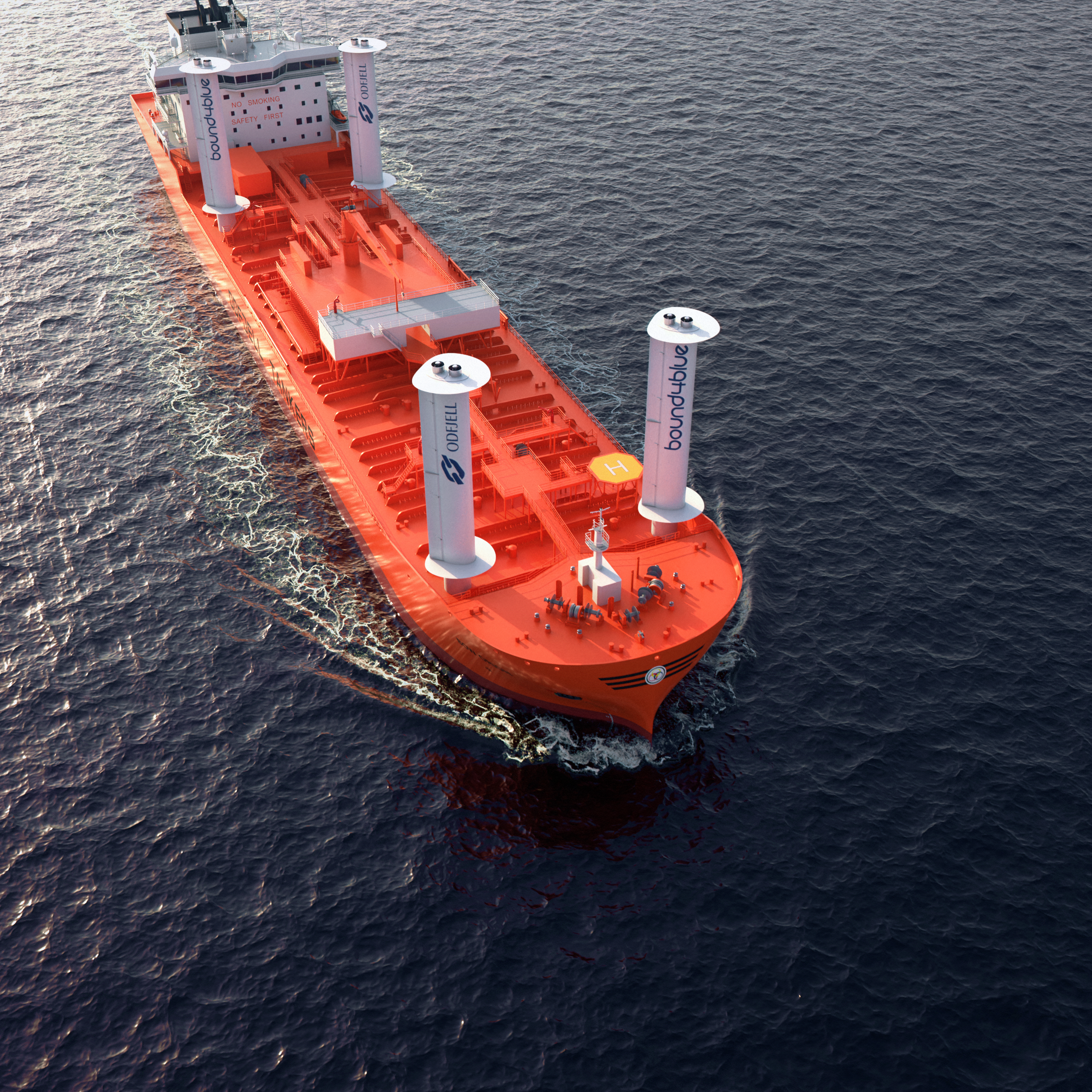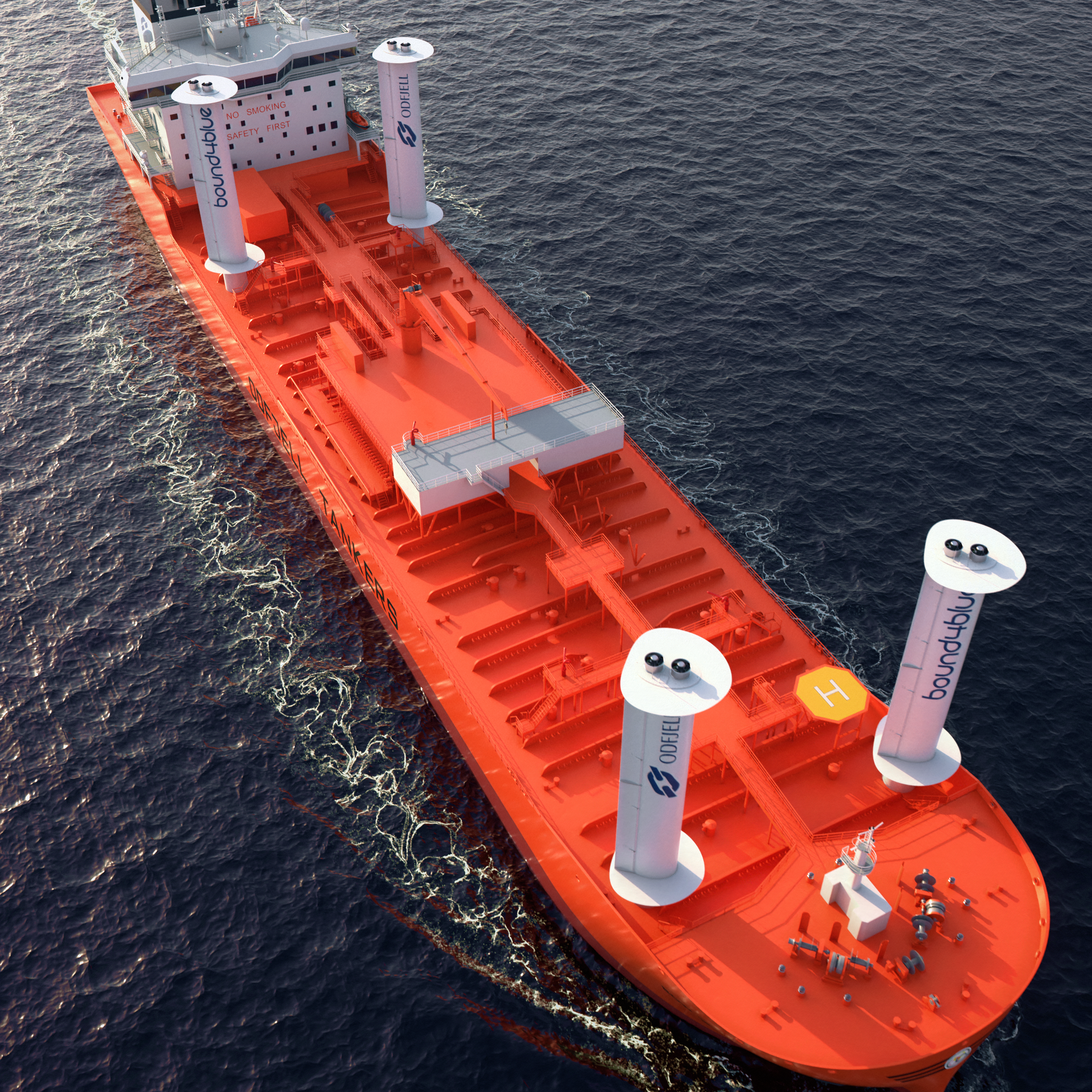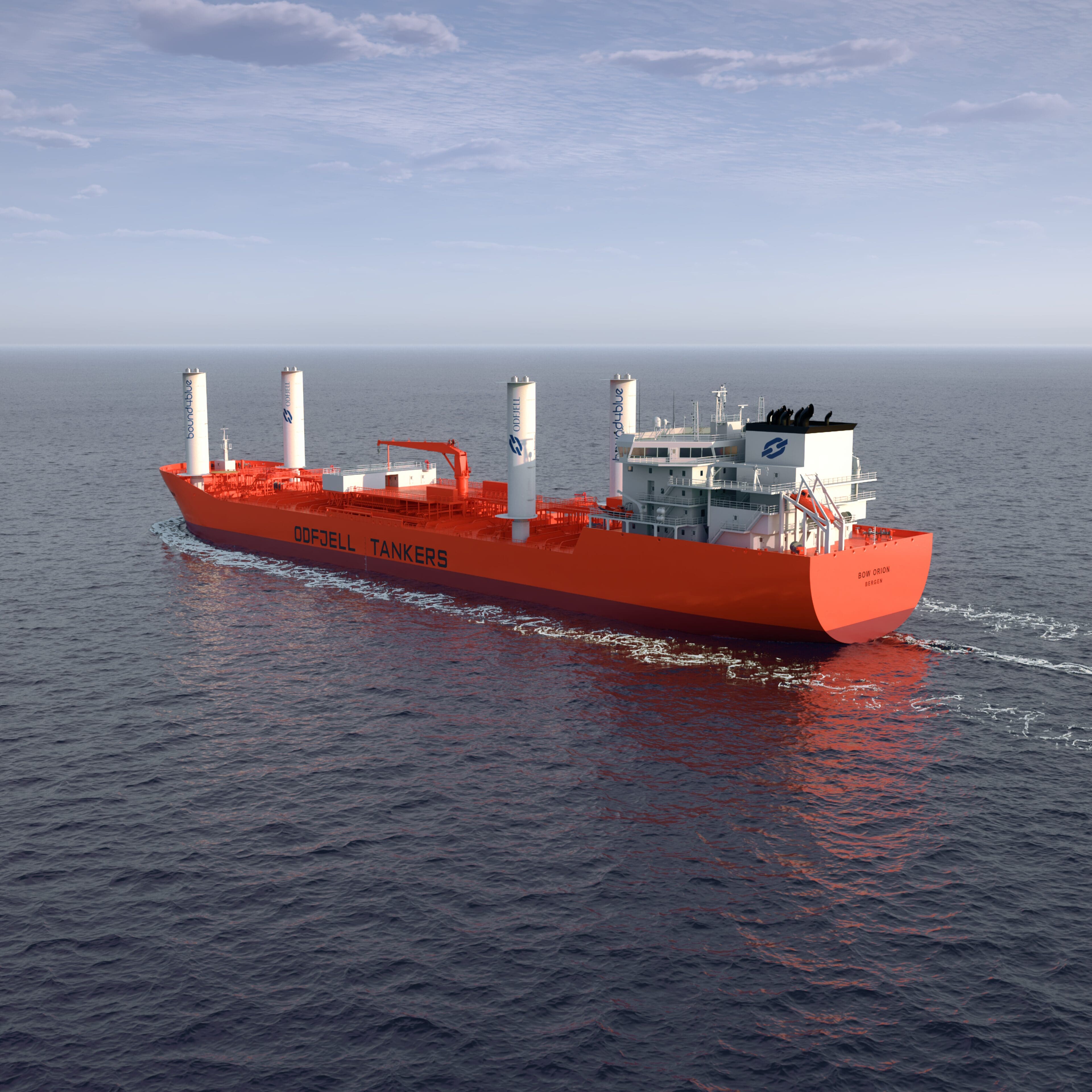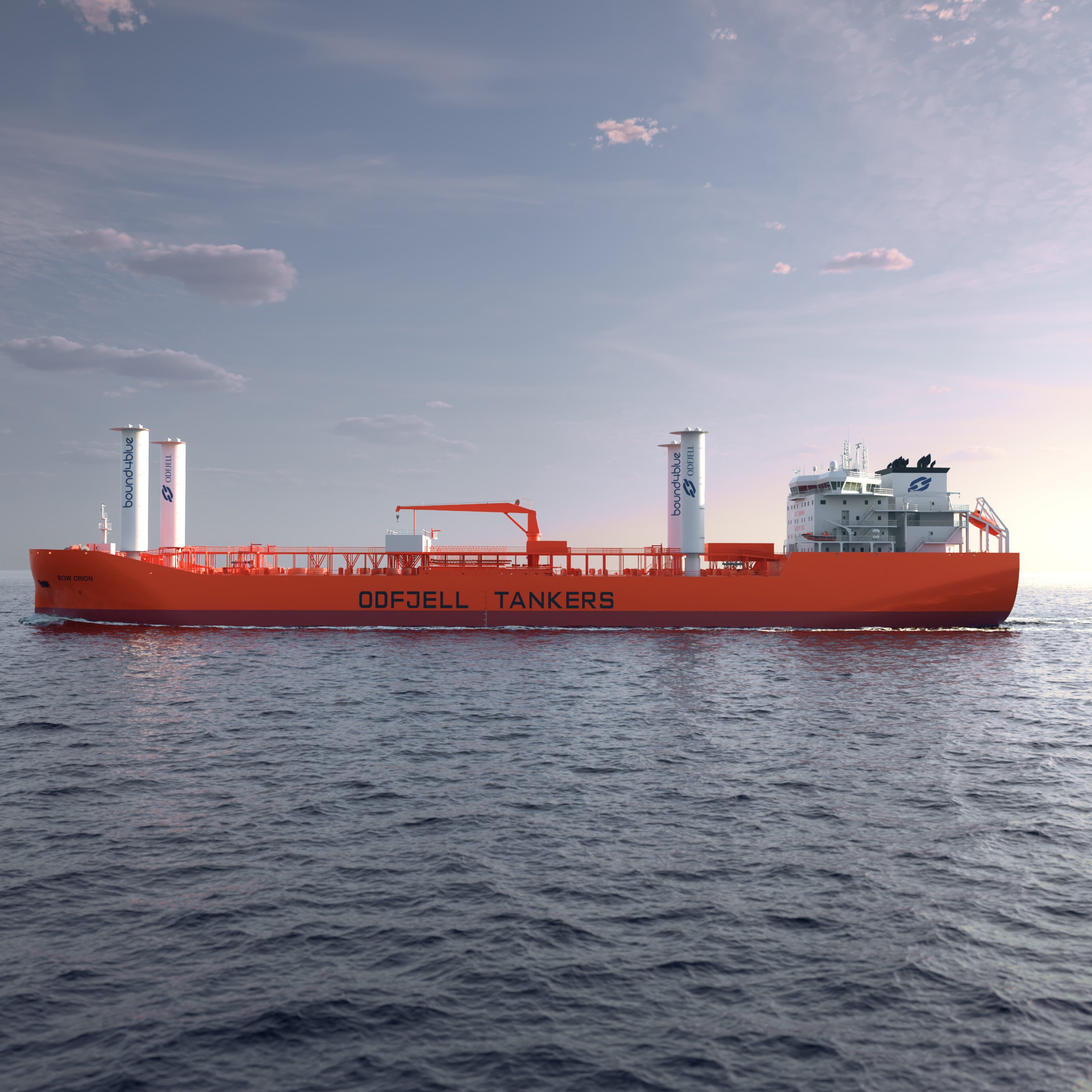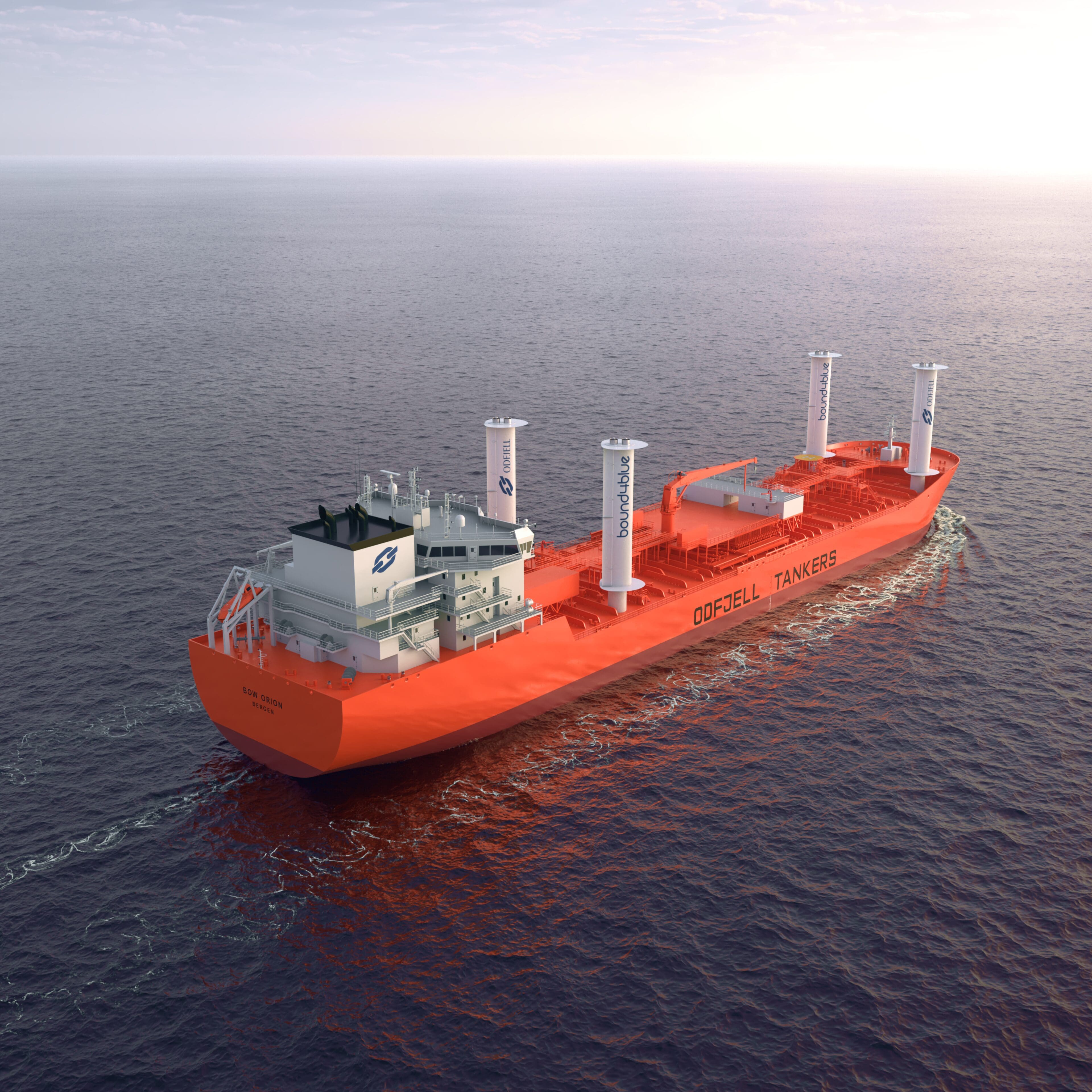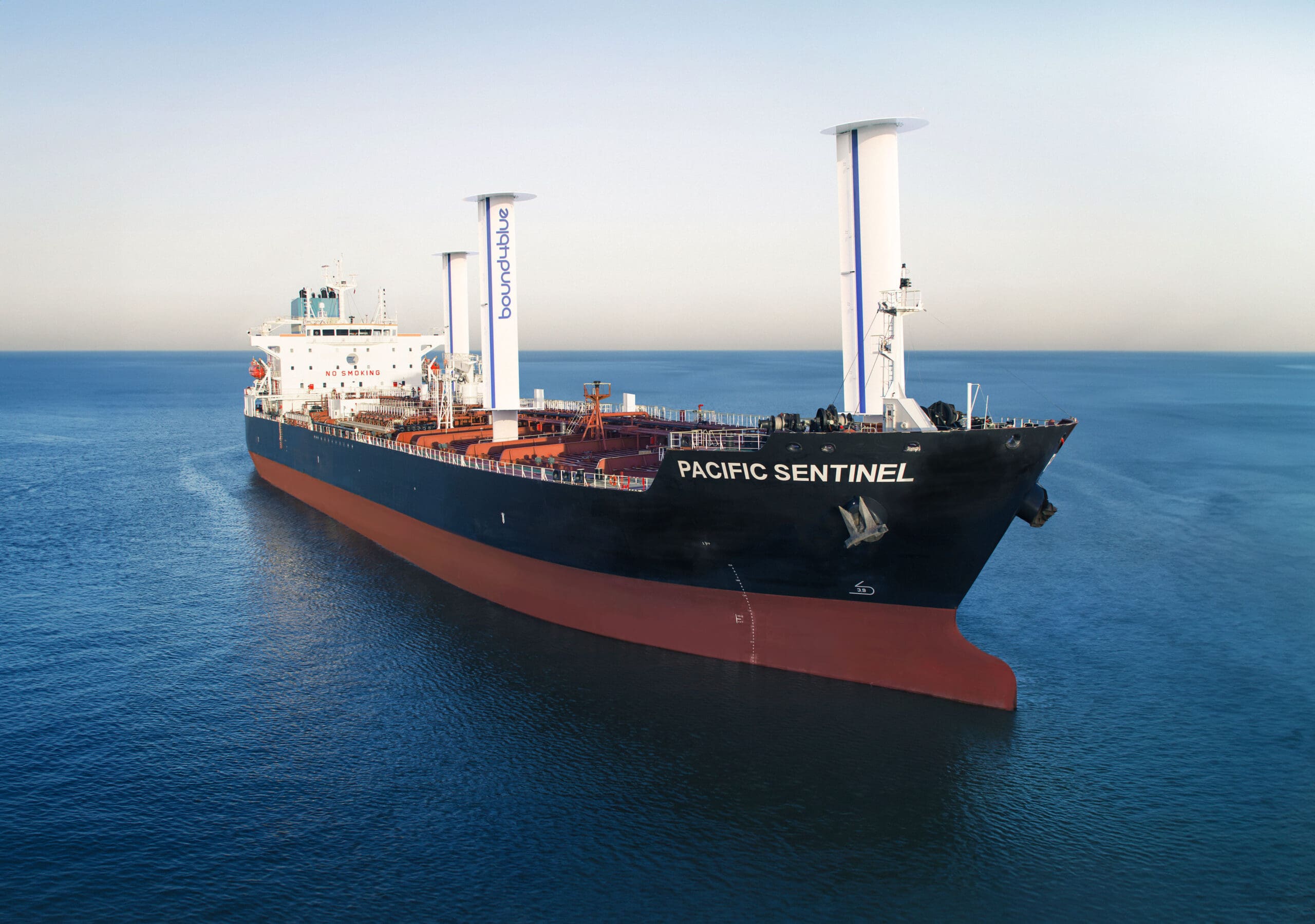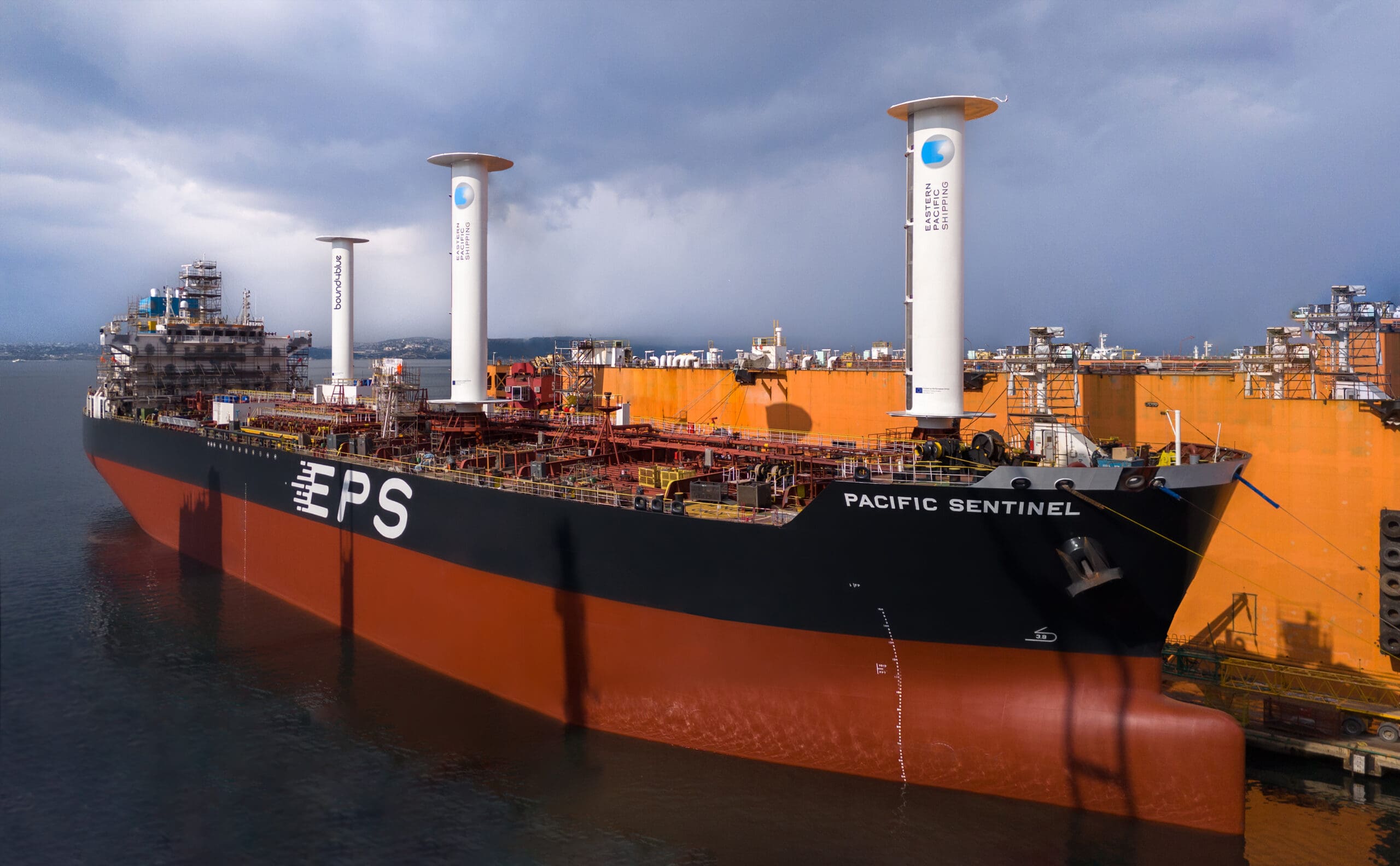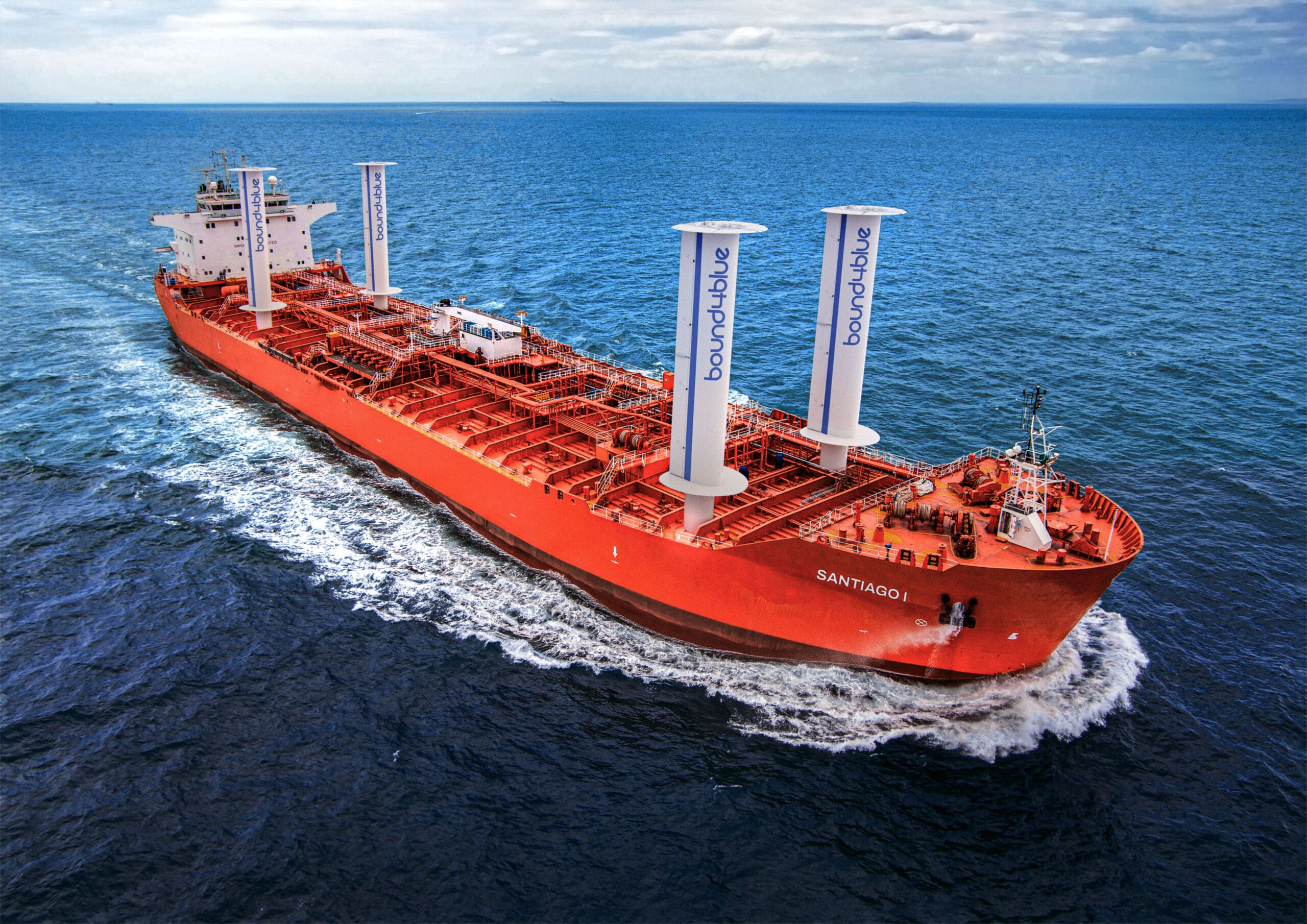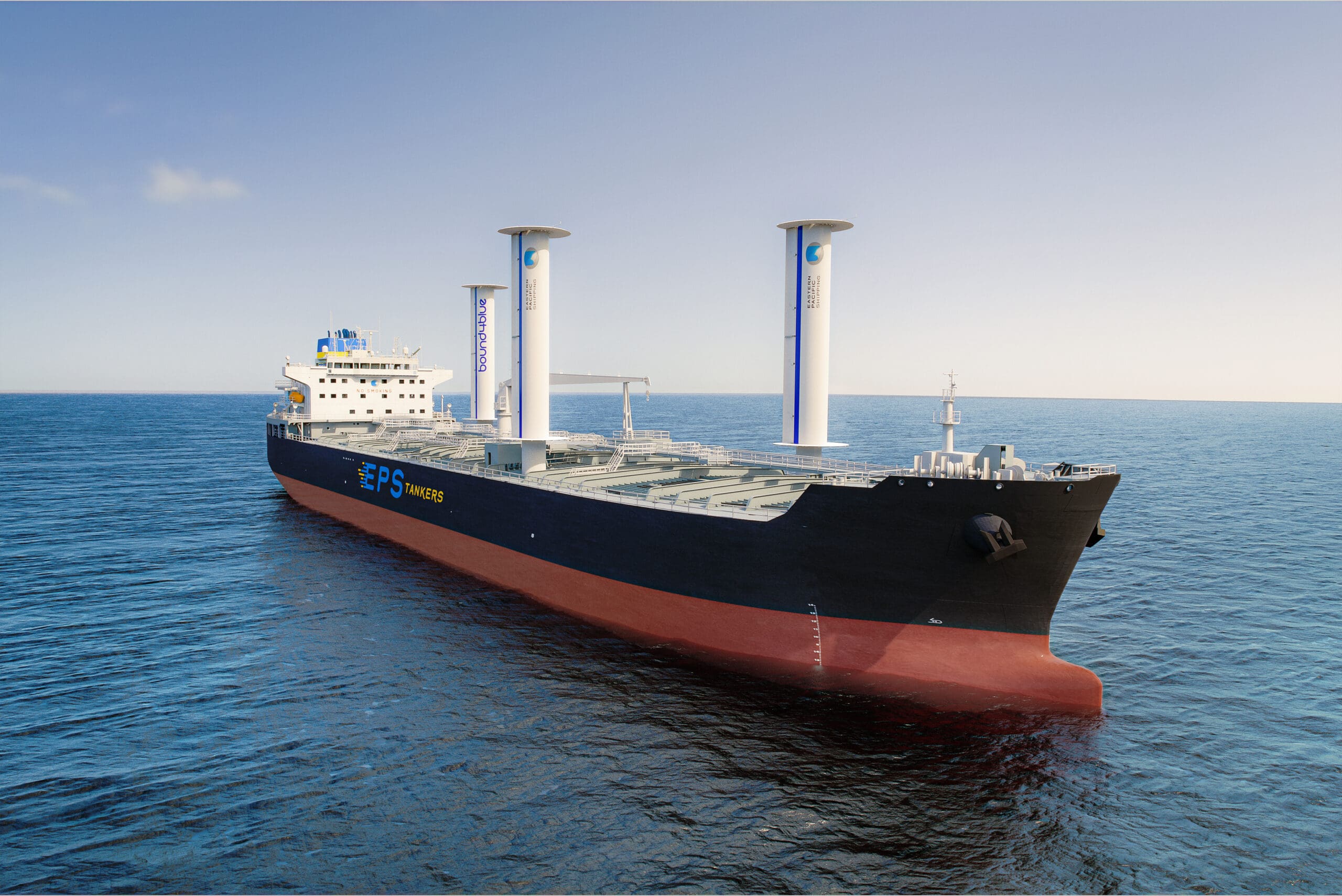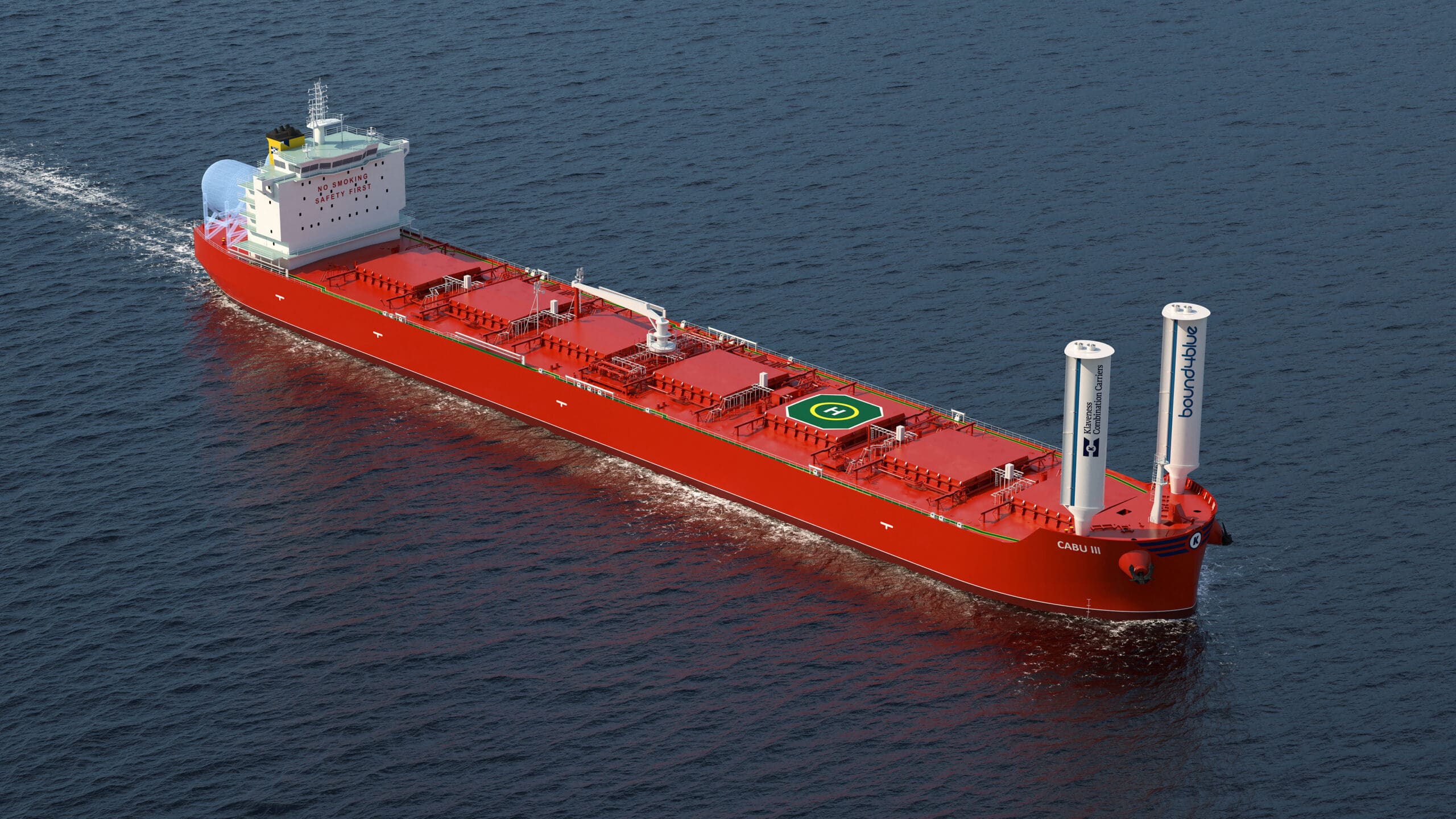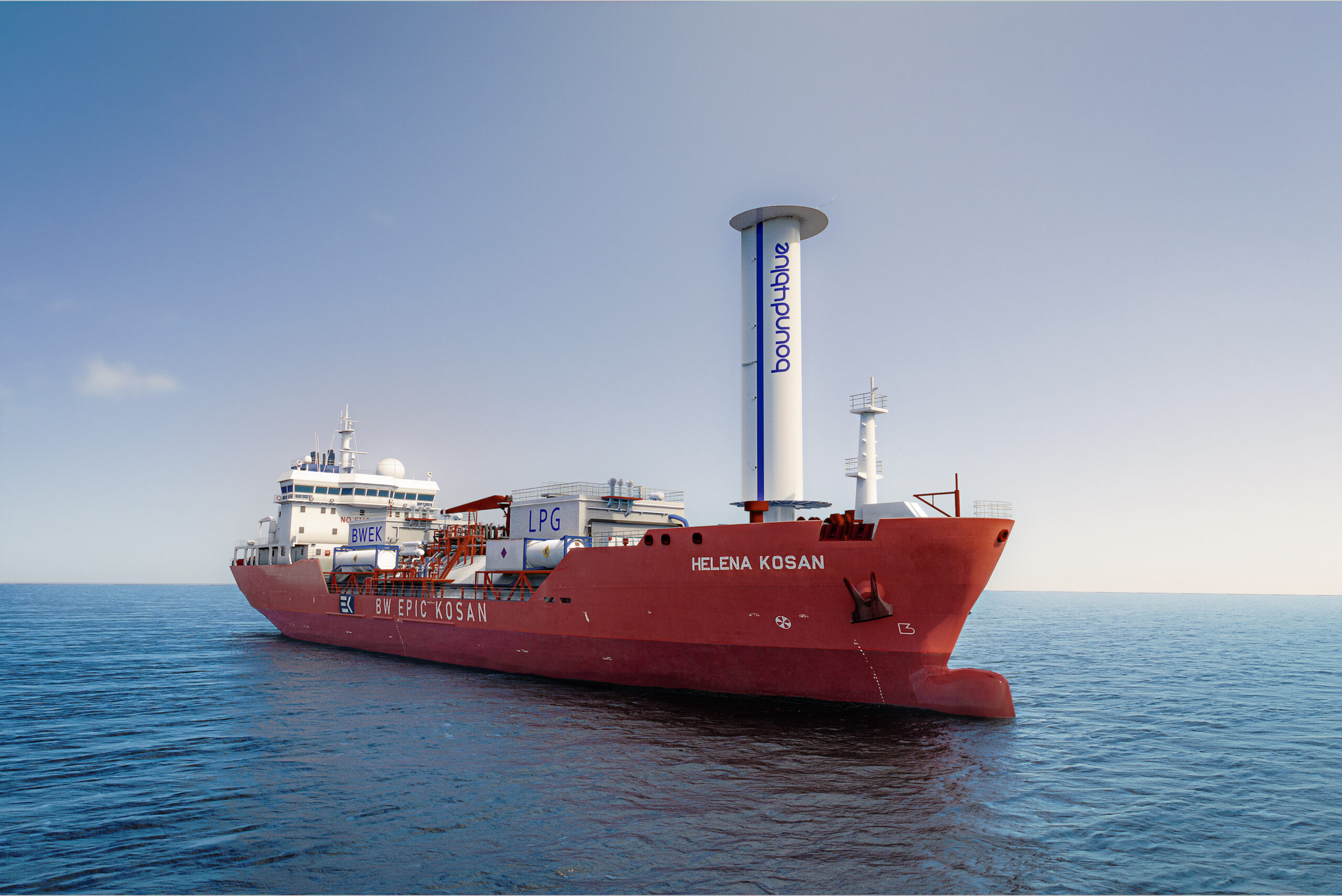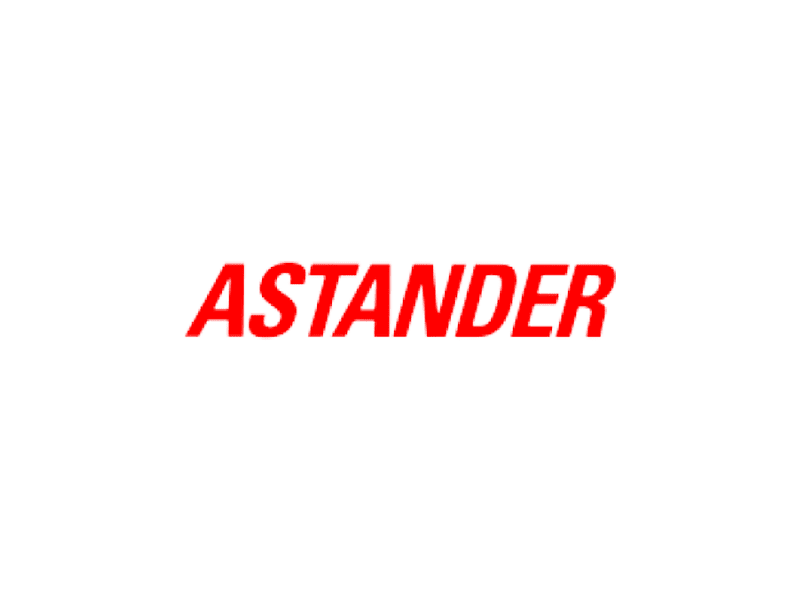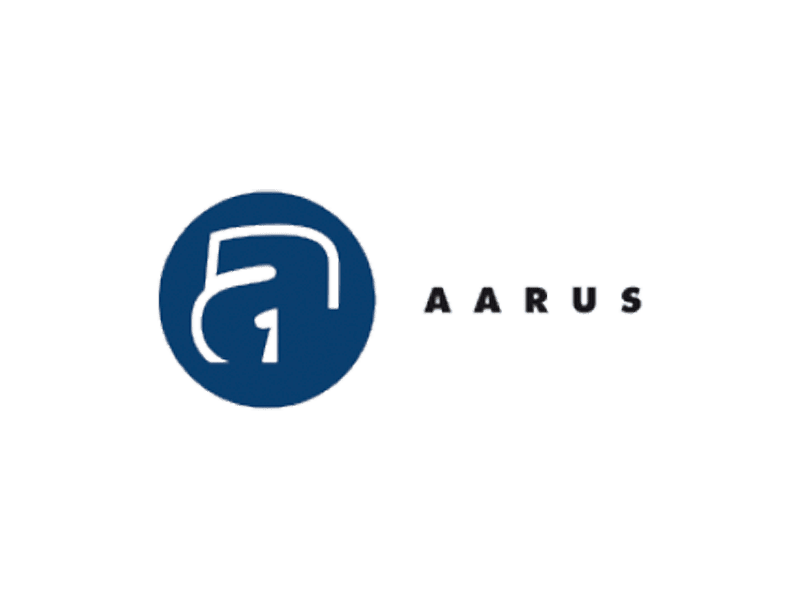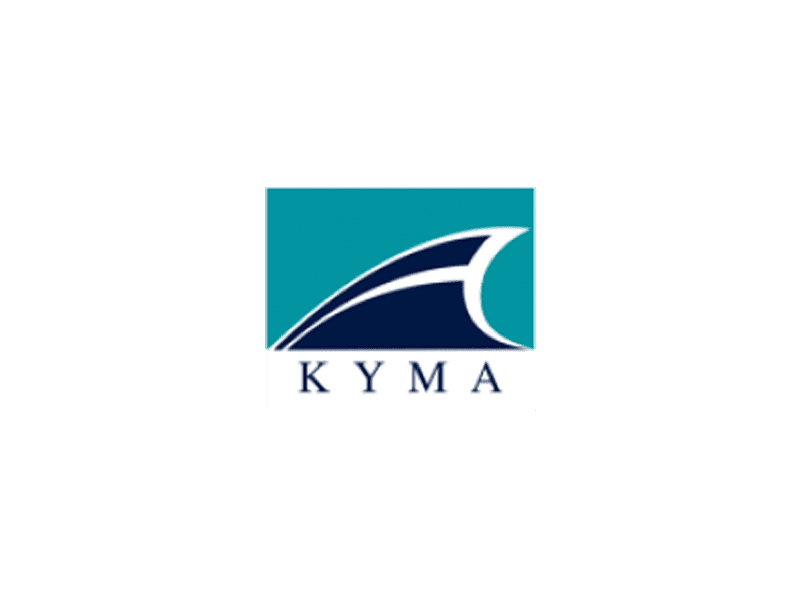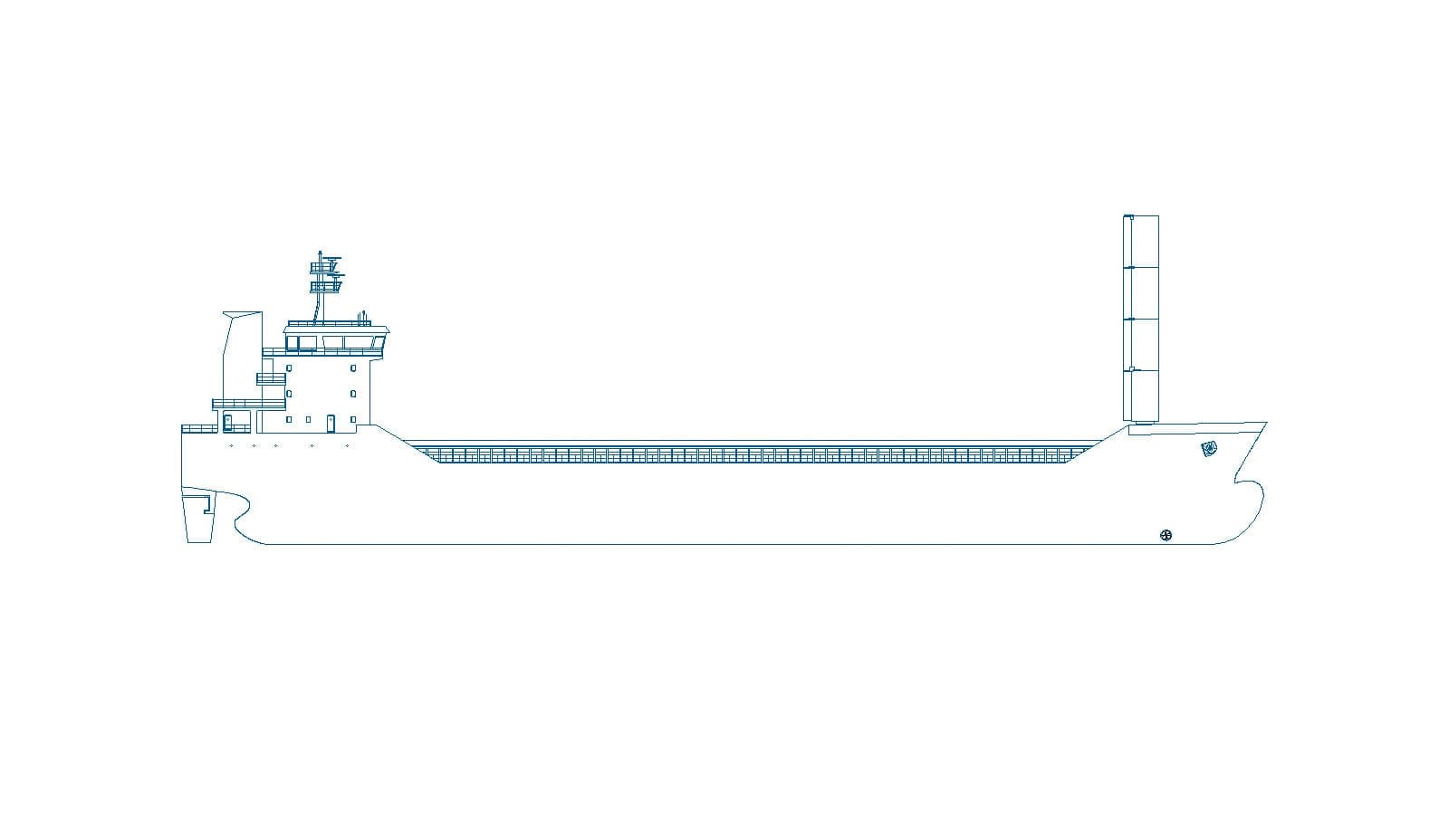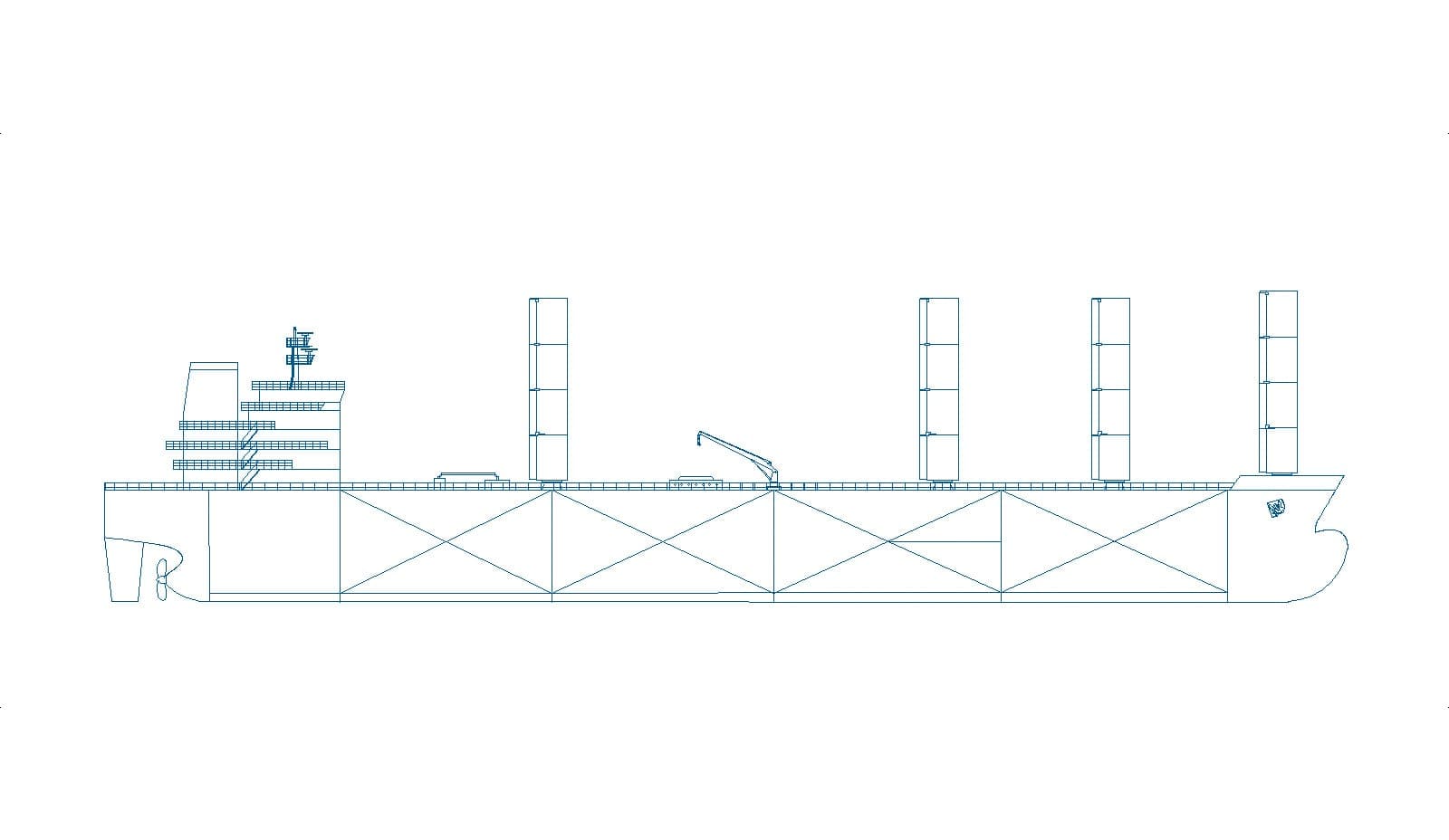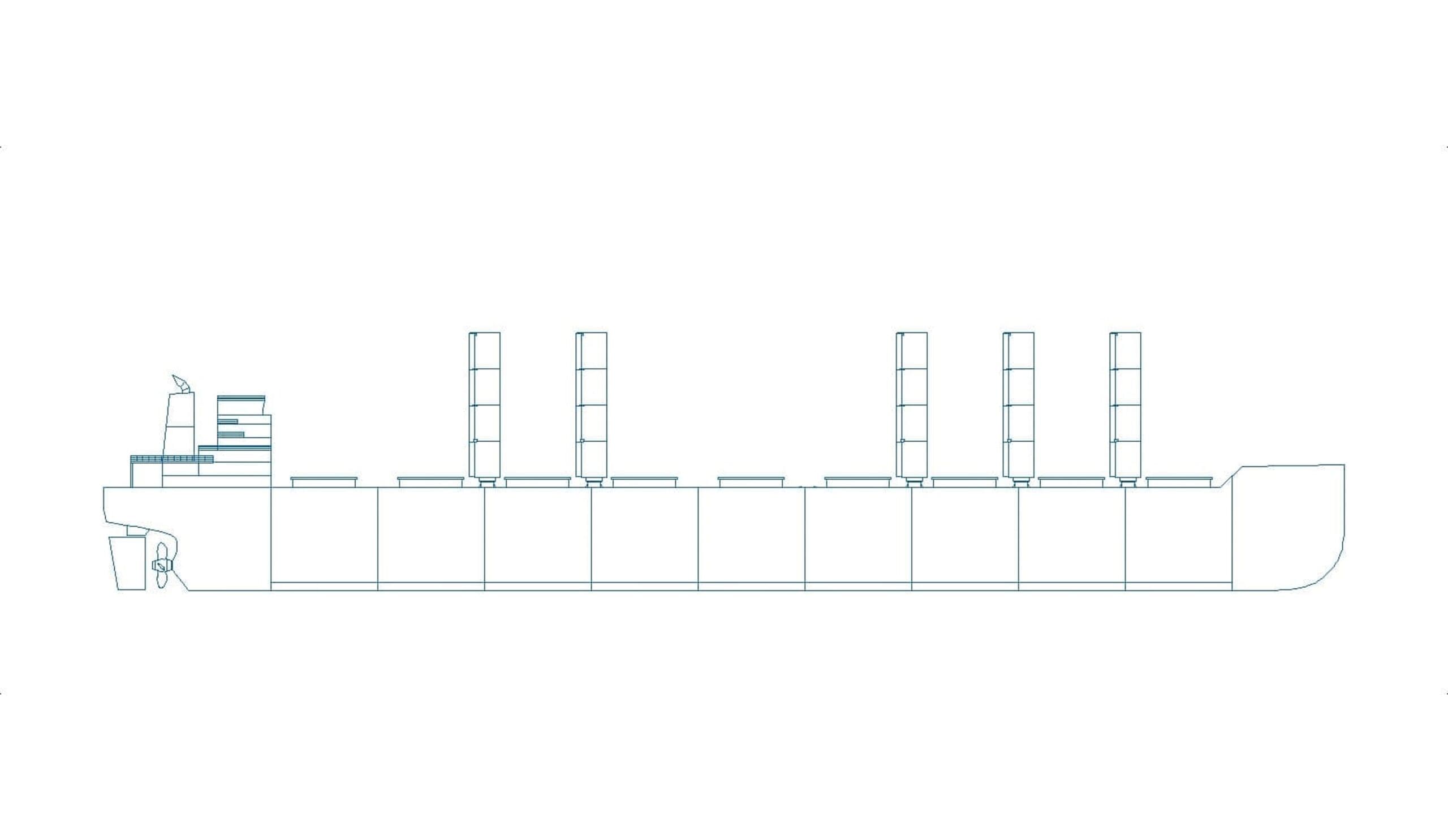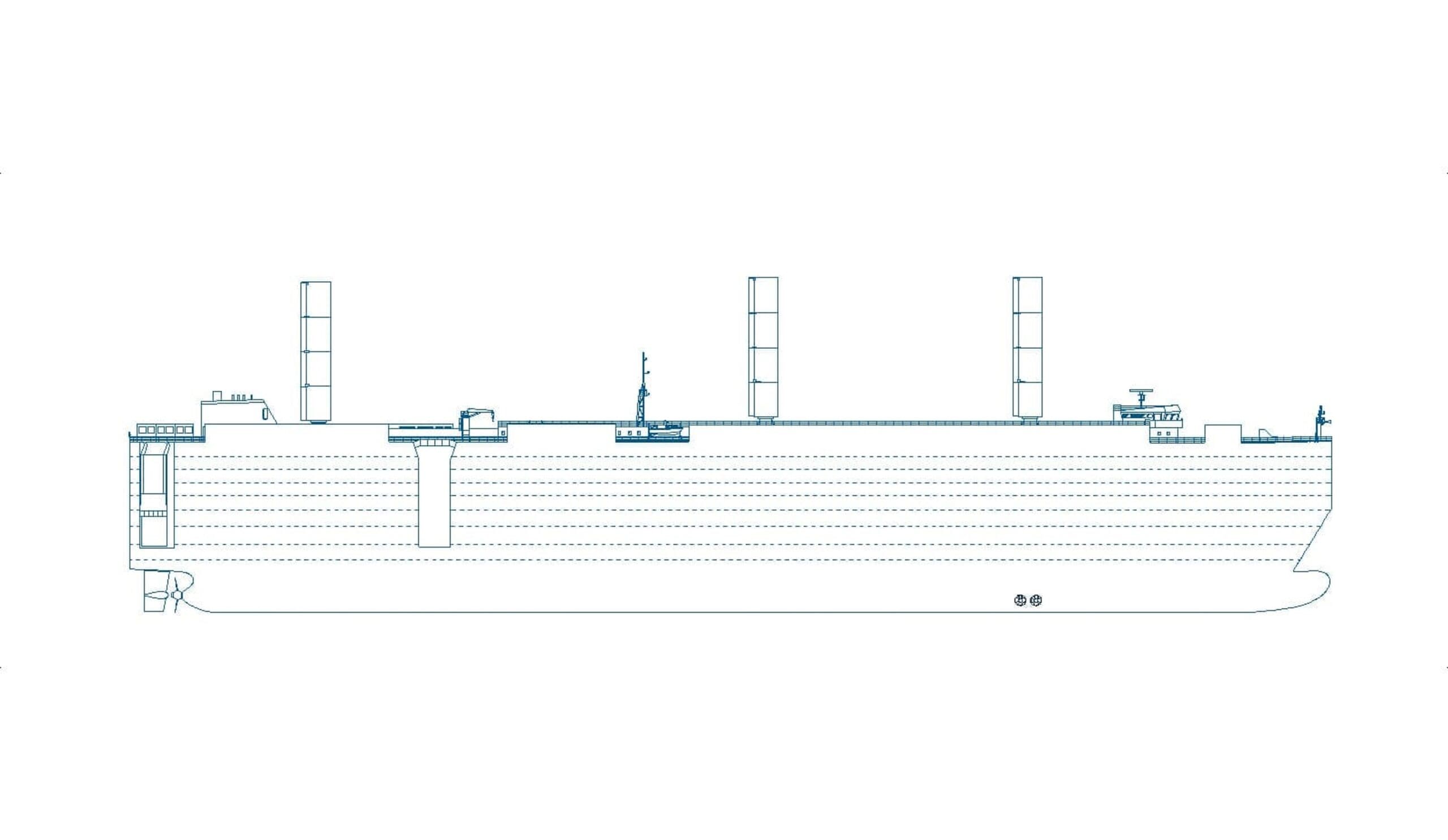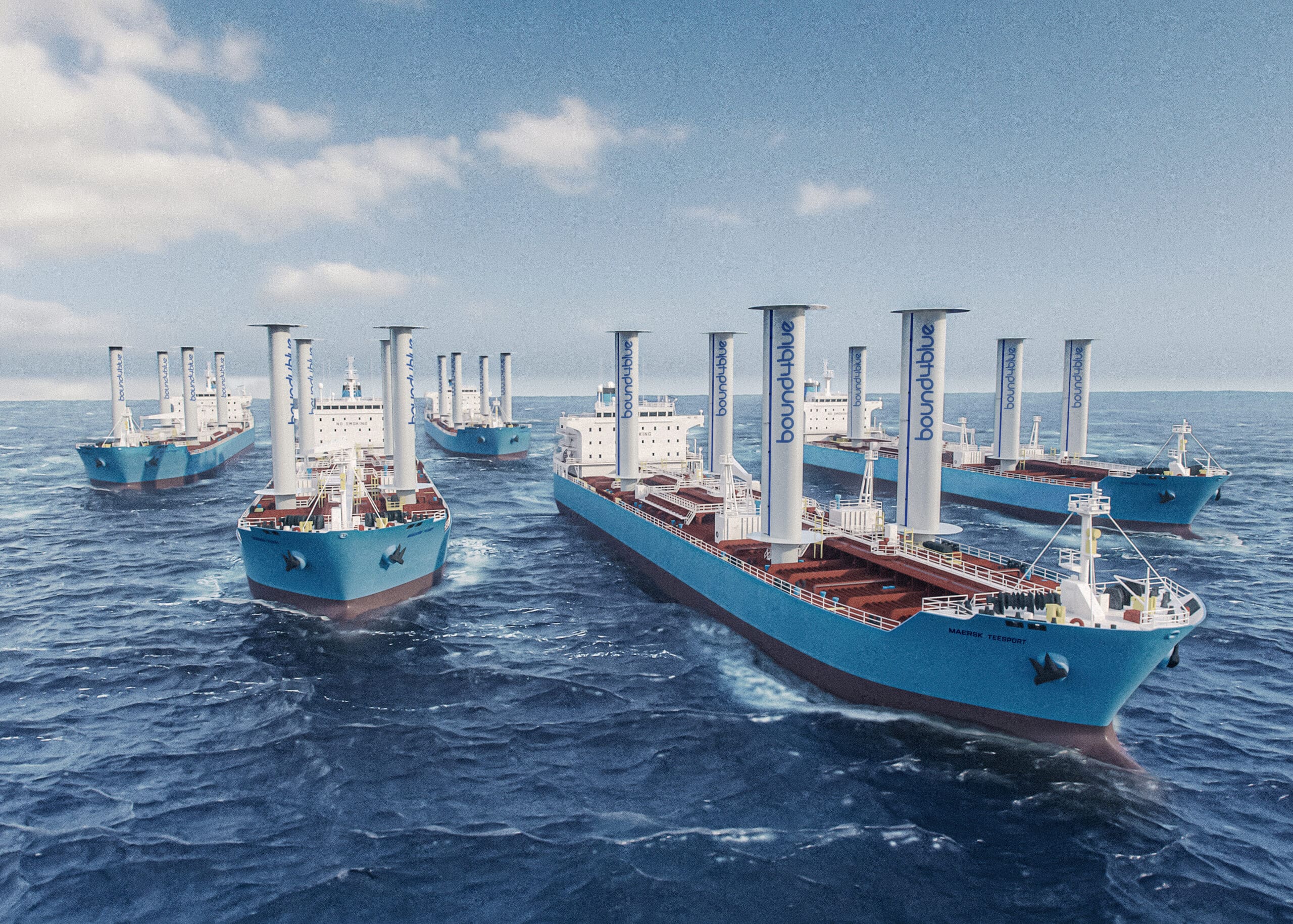
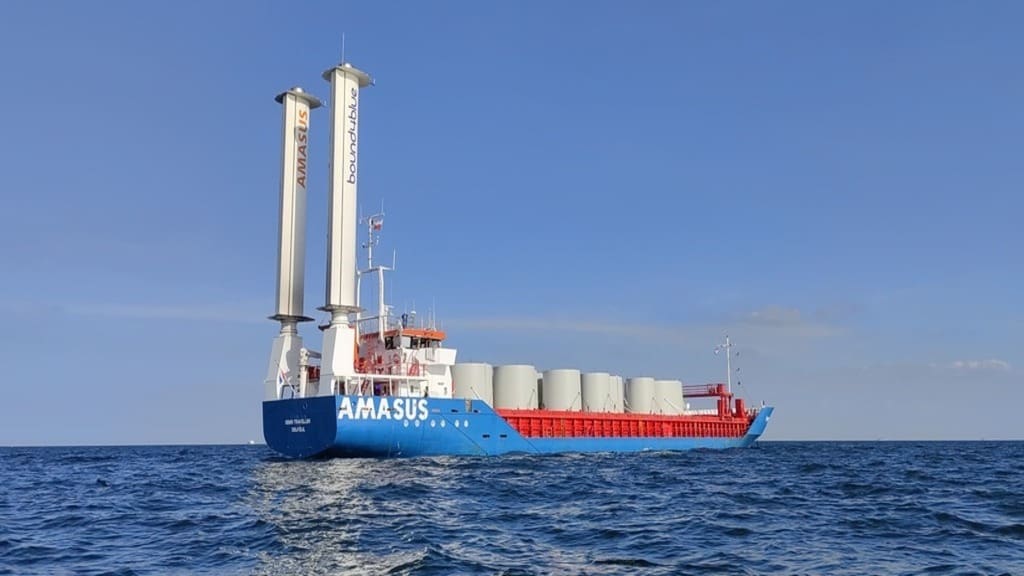
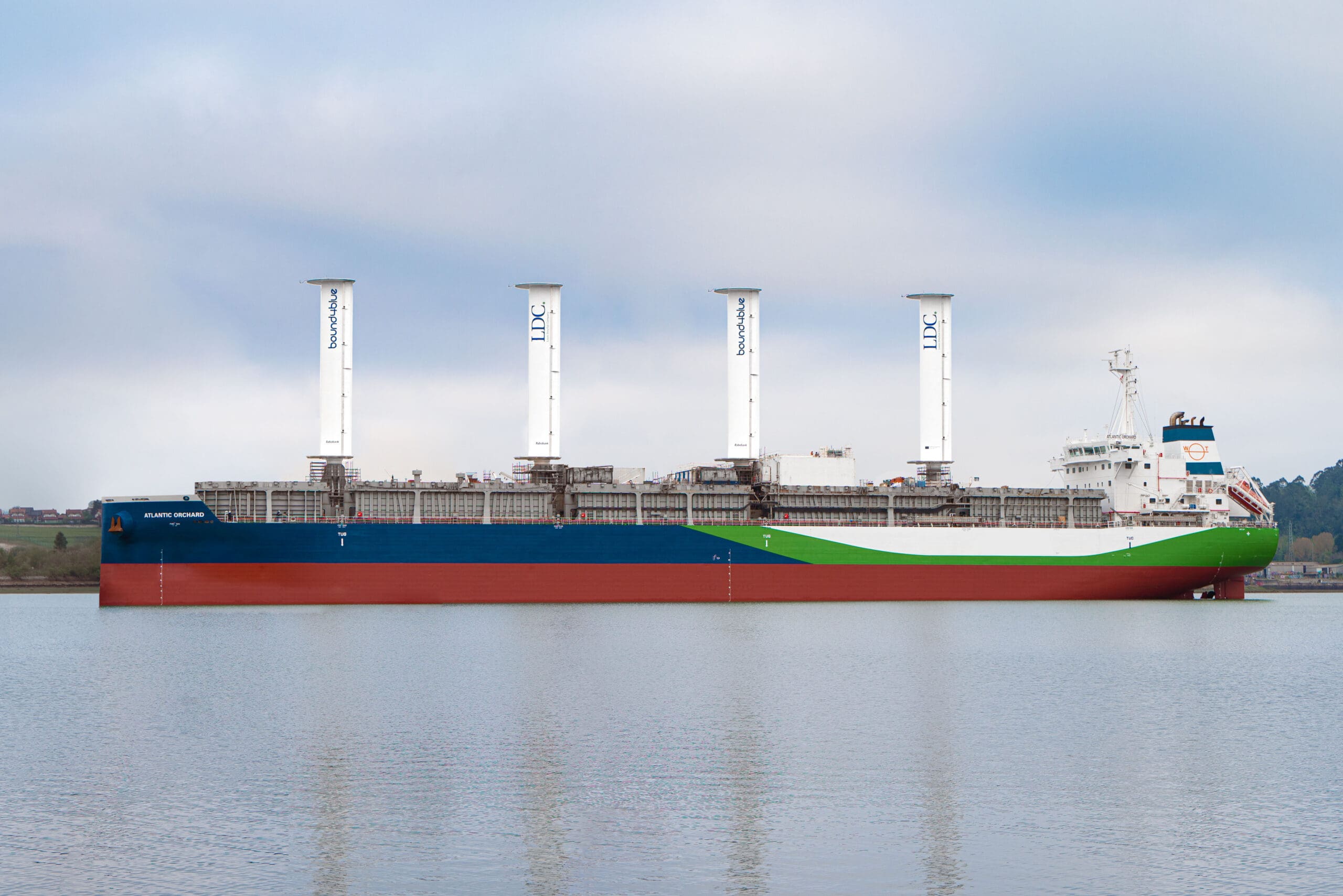
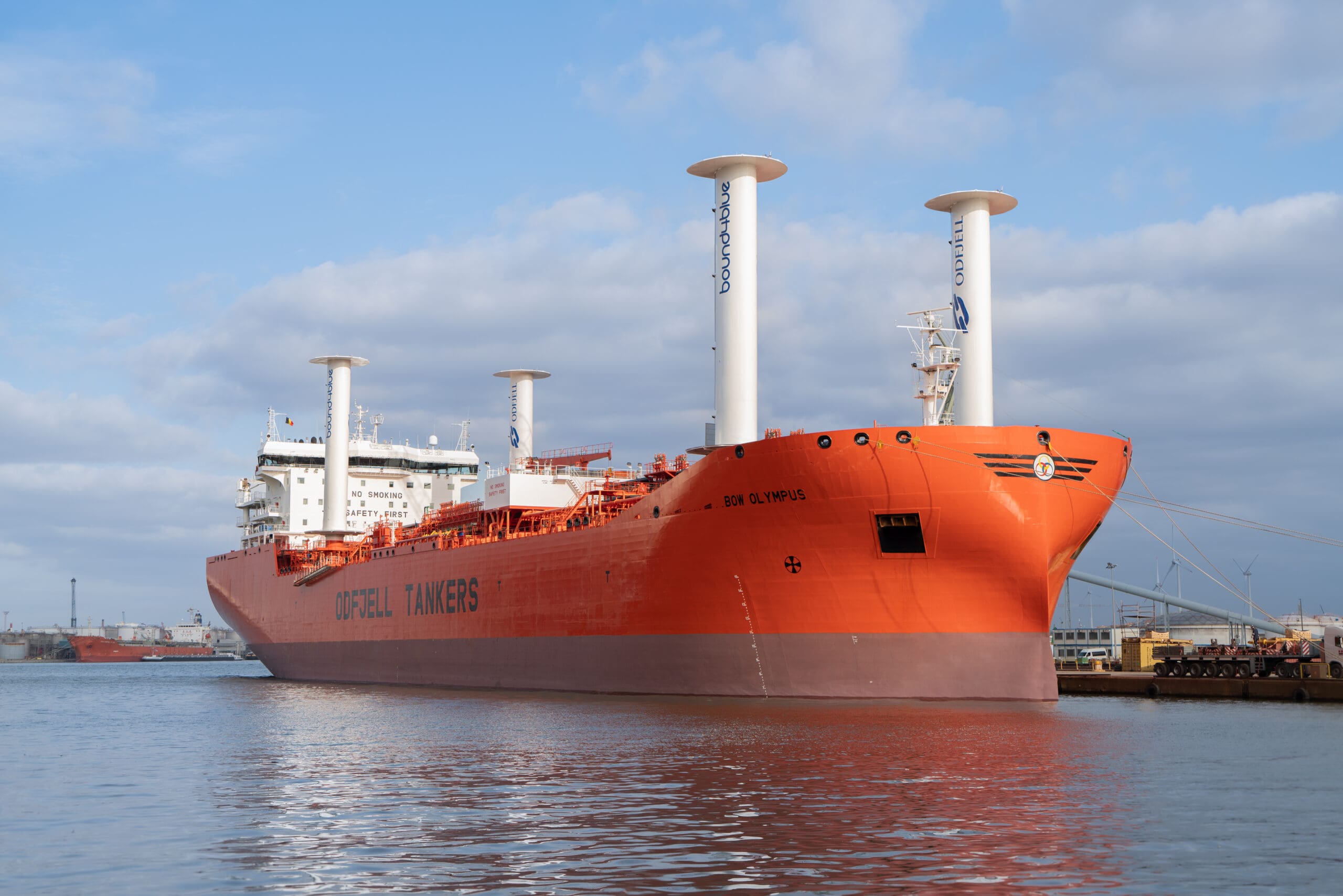
Installations & Orderbook
See how our suction sails are bringing real results and check our latest and upcoming installations
Discover the power of our eSAILs® for your fleet. Real results from real customers, including improved fuel efficiency, increased speed, reduced emissions and regulatory compliance.
With our portfolio of safe, proven, and reliable eSAIL® models – and other optional add-on solutions – we can provide a turn-key solution for Tankers, Bulkers, Ro-Ros, Cruises, Ferries and General Cargo vessels, regardless of their size or if it’s a new build or an existing ship.
As of today
eSAILs®
Ships
Next installations
eSAILs®
Ships
Expertise across
different segments
Select category
EEMS Traveller
Application: 90m LOA general cargo
Configuration: x2 units Model 1 - 17 x 2.85 m
Completion: June 2023
La Naumon
Application: 62m LOA General Cargo
Configuration: x1 unit Model 1 – 17 x 2.85 m (tilting)
Completion: December 2021
Tuhaa Pae V
Application: 90m LOA Multipurpose Cargo Vessel
Configuration: x1 unit Model 2 – 22 x 4.5 m
Completion: 2026
Fluvius Tavy
Configuration: x1 unit Model 2 – 22 x 4.5 m
Ville de Bordeaux
Application: 154m LOA Ro-Ro
Configuration: x3 units Model 2 – 22 x 4.5 m
Completion: February 2024
Crimson Kingdom
Application: 229m LOA panamax
Configuration: x4 units Model 2 – 26 x 4.5 m (tilting)
Completion: N/A
Balueiro Segundo
Application: 37m LOA longliner
Configuration: x1 unit Model 1 – 12 x 2.85 m
Completion: May 2021
Bow Olympus
Application: 183m LOA
Configuration: x4 units Model 2 – 22 x 4.5 m
Completion: 2024
Pacific Sentinel
Application: 183m LOA
Configuration: x3 units Model 2 – 22 x 4.5 m
Completion: 2024
Santiago I
Application: 183m LOA
Configuration: x4 units Model 2 – 22 x 4.5 m
Completion: 2025
Maersk Tankers
Application: Maersk Tacoma, Maersk Tokyo, Maersk Tampa, Maersk Tangier, Maersk Teesport
Configuration: x4 units Model 3 – 24 x 6 m (each vessel)
Newbuild
Configuration: x2 units Model 2 – 22 x 4.5 m
Atlantic Orchard
Application: 180m LOA
Configuration: x4 units Model 2 – 26 x 4.5 m
Completion: 2024
CABU III
Configuration: x2 unit Model 2 – 24 x 4.5 m
Helena Kosan
Configuration: x1 unit Model 3 – 24 x 4.5 m
Six steps to
start saving fuel
-
01
CONTACT AND PRELIMINARY STUDY
-
02
OPTIMAL ARRANGEMENT SELECTION OF SAILS
-
03
SAILS INSTALLATION DESIGN AND APPROVAL
-
04
VESSEL PREPARATION
-
05
INSTALLATION OF BOUND4BLUE SAILS
-
06
WELCOME TO THE BLUE EFFICIENCY
-
Get in touch and we will carry out a free-of-charge preliminary business case for you, providing an estimation of expected savings and ROI period, as well as some tips to better understand the application of wind-assisted propulsion systems.
We just need you to provide some general information on your fleet and sailing areas. Calculations, based on years-long historical weather data will be done by our proprietary performance prediction software tool.
-
We will perform a detailed analysis to select the optimal general arrangement of your sail-assisted vessel. In other words, we will select the most appropriate number, size and location of bound4blue suction sails for your vessel and operation.
-
The selection considers several general and vessel-specific factors, including:
-
Geometry and structure – Available deck space, existing deck equipment and piping, deck-hull structure for installation of foundations, etc.
-
Aerodynamic interference – between sails, with vessel superstructures and other deck equipment.
-
Rules and regulation – Stability, visibility from bridge, navigation lights, radar, etc.
-
Safety and operations – Air draught, cargo operations, etc.
-
-
When the optimal general arrangement has been selected, a detailed vessel transformation project will be done, ensuring that the resulting vessel complies with all applicable rules and regulations. Note that this is like the process followed to install a marine deck crane.
The transformation project will include, among others:
-
Detailed stability, bridge visibility and navigation light analysis.
-
Local deck reinforcement (foundations) for the installation of sails.
-
Power supply and electrical circuit diagrams.
The generated documentation from the transformation project will be submitted to the Class Society and Flagging State for approval.
-
-
Some work shall be done on the vessel prior to the installation of the sails. The significant being:
-
The manufacture and installation of the foundations where the sails will be installed.
-
The installation of cabling to provide electric power to the sails and to connect the sails with the autonomous control system components on the vessel’s bridge.
A good option to maximise cost-effectiveness is to execute this work during a scheduled regular dry-dock of the vessel.
These tasks should not take more than 1-2 weeks.
-
-
The installation of bound4blue sails is quick and simple.
The sails will be positioned on the foundations and their flanges bolted together. Cabling connections are done, and we are ready to go.
This operation can be done during the same dry-dock where the vessel is prepared or afloat at any other regular port call.
-
Thanks to bound4blue’s autonomous control system, no special crew training is required.
Just switch on the system and it will do the rest: reducing your fuel bill and pollutant emissions from day one.
-
01
CONTACT AND PRELIMINARY STUDY
Get in touch and we will carry out a free-of-charge preliminary business case for you, providing an estimation of expected savings and ROI period, as well as some tips to better understand the application of wind-assisted propulsion systems.
We just need you to provide some general information on your fleet and sailing areas. Calculations, based on years-long historical weather data will be done by our proprietary performance prediction software tool.
-
02
OPTIMAL ARRANGEMENT SELECTION OF SAILS
We will perform a detailed analysis to select the optimal general arrangement of your sail-assisted vessel. In other words, we will select the most appropriate number, size and location of bound4blue suction sails for your vessel and operation.
-
The selection considers several general and vessel-specific factors, including:
-
Geometry and structure – Available deck space, existing deck equipment and piping, deck-hull structure for installation of foundations, etc.
-
Aerodynamic interference – between sails, with vessel superstructures and other deck equipment.
-
Rules and regulation – Stability, visibility from bridge, navigation lights, radar, etc.
-
Safety and operations – Air draught, cargo operations, etc.
-
-
03
SAILS INSTALLATION DESIGN AND APPROVAL
When the optimal general arrangement has been selected, a detailed vessel transformation project will be done, ensuring that the resulting vessel complies with all applicable rules and regulations. Note that this is like the process followed to install a marine deck crane.
The transformation project will include, among others:
-
Detailed stability, bridge visibility and navigation light analysis.
-
Local deck reinforcement (foundations) for the installation of sails.
-
Power supply and electrical circuit diagrams.
The generated documentation from the transformation project will be submitted to the Class Society and Flagging State for approval.
-
-
04
VESSEL PREPARATION
Some work shall be done on the vessel prior to the installation of the sails. The significant being:
-
The manufacture and installation of the foundations where the sails will be installed.
-
The installation of cabling to provide electric power to the sails and to connect the sails with the autonomous control system components on the vessel’s bridge.
A good option to maximise cost-effectiveness is to execute this work during a scheduled regular dry-dock of the vessel.
These tasks should not take more than 1-2 weeks.
-
-
05
INSTALLATION OF BOUND4BLUE SAILS
The installation of bound4blue sails is quick and simple.
The sails will be positioned on the foundations and their flanges bolted together. Cabling connections are done, and we are ready to go.
This operation can be done during the same dry-dock where the vessel is prepared or afloat at any other regular port call.
-
06
WELCOME TO THE BLUE EFFICIENCY
Thanks to bound4blue’s autonomous control system, no special crew training is required.
Just switch on the system and it will do the rest: reducing your fuel bill and pollutant emissions from day one.
